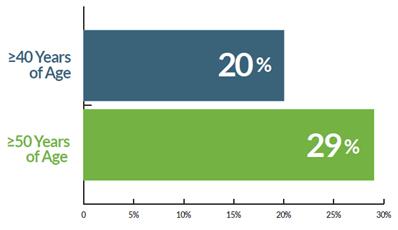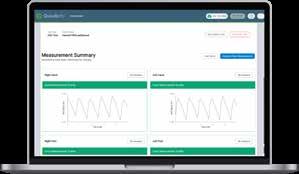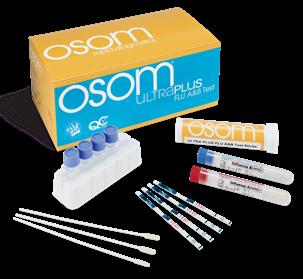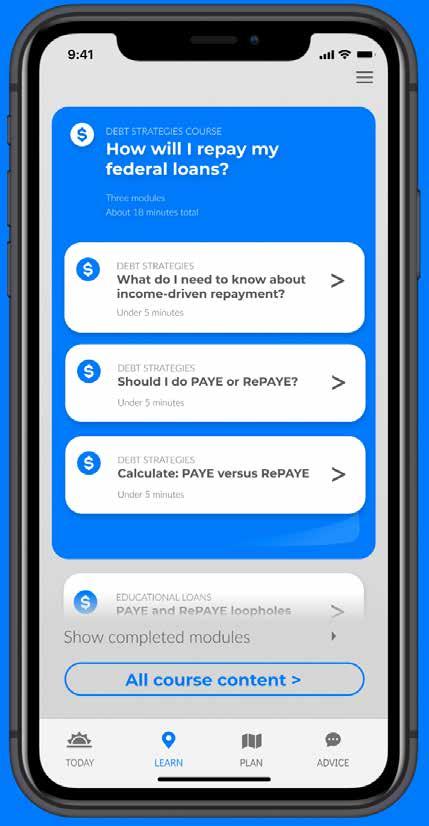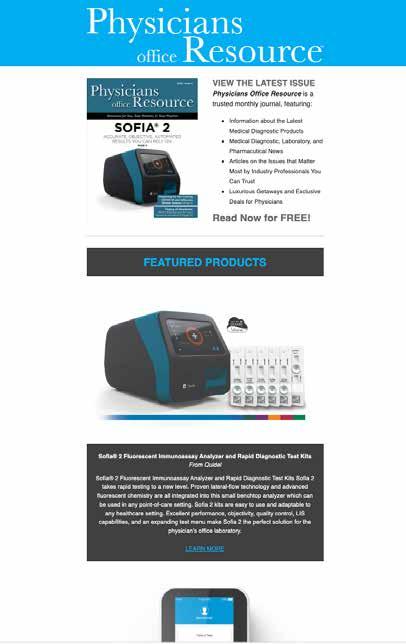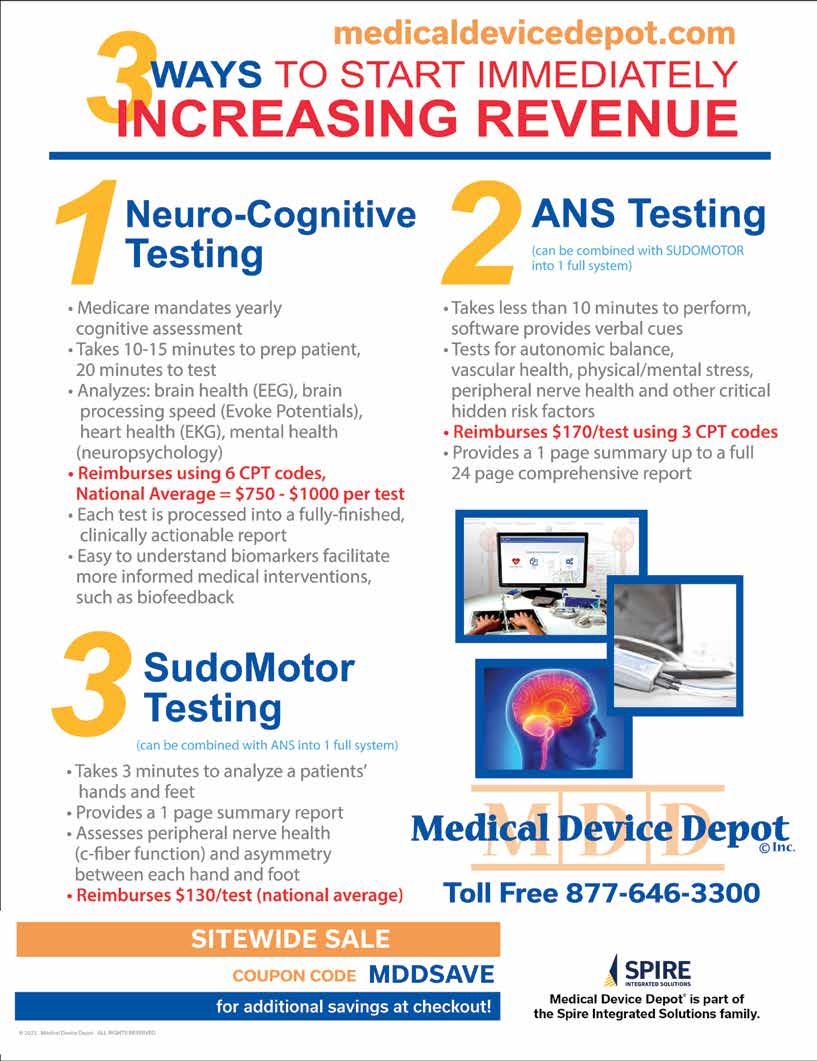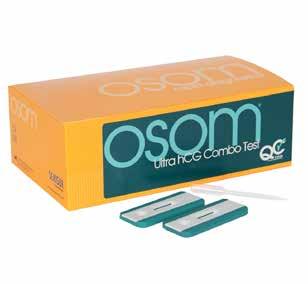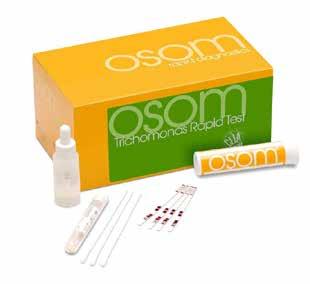CHART A NEW COURSE
BOXED WARNING: SERIOUS SKIN REACTIONS
• PADCEV can cause severe and fatal cutaneous adverse reactions including Stevens-Johnson syndrome (SJS) and Toxic Epidermal Necrolysis (TEN), which occurred predominantly during the first cycle of treatment, but may occur later.
• Closely monitor patients for skin reactions.
• Immediately withhold PADCEV and consider referral for specialized care for suspected SJS or TEN or severe skin reactions.
• Permanently discontinue PADCEV in patients with confirmed SJS or TEN; or Grade 4 or recurrent Grade 3 skin reactions.
INDICATION



PADCEV, as a single agent, is indicated for the treatment of adult patients with locally advanced or metastatic urothelial cancer (mUC) who:

• have previously received a programmed death receptor-1 (PD-1) or programmed death-ligand 1 (PD-L1) inhibitor and platinum-containing chemotherapy, or

• are ineligible for cisplatin-containing chemotherapy and have previously received one or more prior lines of therapy.
PADCEV, in combination with pembrolizumab, is indicated for the treatment of adult patients with locally advanced or metastatic urothelial cancer (mUC) who are not eligible for cisplatin-containing chemotherapy.
This indication is approved under accelerated approval based on tumor response rate and durability of response. Continued approval for this indication may be contingent upon verification and description of clinical benefit in the confirmatory trials.

IMPORTANT SAFETY INFORMATION
WARNINGS AND PRECAUTIONS
Skin reactions Severe cutaneous adverse reactions, including fatal cases of SJS or TEN occurred in patients treated with PADCEV. SJS and TEN occurred predominantly during the first cycle of treatment but may occur later. Skin reactions occurred in 56% (all grades) of the 753 patients treated with PADCEV as a single agent in clinical trials. Twenty-four percent (24%) of patients had maculo-papular rash and 33% had pruritus. Grade 3-4 skin reactions occurred in 12% of patients, including maculo-papular rash, erythematous rash, rash or drug eruption, symmetrical drug-related intertriginous and flexural exanthema (SDRIFE), bullous dermatitis, exfoliative dermatitis, and palmar-plantar erythrodysesthesia. The median time to onset of severe skin reactions was 0.7 months (range: 0.1 to 6 months). Among patients experiencing a skin reaction leading to dose interruption who then restarted PADCEV (n=59), 24% of patients restarting at the same dose and 16% of patients restarting at a reduced dose experienced recurrent severe skin reactions. Skin reactions led to discontinuation of PADCEV in 2.6% of patients. When PADCEV was given in combination with pembrolizumab, the incidence of skin reactions, including severe events, occurred at a higher rate. Skin reactions occurred in 72% (all grades) of the 121 patients treated with PADCEV in combination with pembrolizumab in clinical trials. The majority of the skin reactions that occurred with combination therapy included maculo-papular rash, macular rash and papular rash. Grade 3-4 skin reactions occurred in 20% of patients (Grade 3: 19%, Grade 4: 0.8%), including maculo-papular rash, bullous dermatitis, dermatitis, exfoliative dermatitis, pemphigoid, rash, erythematous rash, macular rash, and papular rash. A fatal reaction of bullous dermatitis occurred in one patient (0.8%). The median time to onset of severe skin reactions was 2.6 months (range: 0.3 to 16 months). Skin reactions led to discontinuation of PADCEV in 6% of patients.
Monitor patients closely throughout treatment for skin reactions. Consider topical corticosteroids and antihistamines, as clinically indicated. For persistent or recurrent Grade 2 skin reactions, consider withholding PADCEV until Grade ≤1. Withhold PADCEV and refer for specialized care for suspected SJS, TEN or for Grade 3 skin reactions. Permanently discontinue PADCEV in patients with confirmed SJS or TEN; or Grade 4 or recurrent Grade 3 skin reactions.
Hyperglycemia and diabetic ketoacidosis (DKA) Hyperglycemia and DKA, including fatal events, occurred in patients with and without pre-existing diabetes mellitus, treated with PADCEV. Patients with baseline hemoglobin A1C ≥8% were excluded from clinical trials. In clinical trials of PADCEV as a single agent, 14% of the 753 patients treated with PADCEV developed hyperglycemia; 7% of patients developed Grade 3-4 hyperglycemia. Fatal events of hyperglycemia and diabetic ketoacidosis occurred in one patient each (0.1%). The incidence of Grade 3-4 hyperglycemia increased consistently in patients with higher body mass index and in patients with higher baseline A1C. Five percent (5%) of patients required initiation of insulin therapy for treatment of hyperglycemia. The median time to onset of hyperglycemia was 0.6 months (range: 0.1 to 20 months). Hyperglycemia led to discontinuation of PADCEV in 0.4% of patients. Closely monitor blood glucose levels in patients with, or at risk for, diabetes mellitus or hyperglycemia. If blood glucose is elevated (>250 mg/dL), withhold PADCEV.
Pneumonitis/Interstitial Lung Disease (ILD) Severe, life-threatening or fatal pneumonitis/ILD occurred in patients treated with PADCEV. In clinical trials of PADCEV as a single agent, 2.9% of the 753 patients treated with PADCEV had pneumonitis/ILD of any grade and 0.8% had Grade 3-4. The median time to onset of pneumonitis/ILD was 2.7 months (range: 0.6 to 6 months). The incidence of pneumonitis/ILD, including severe events occurred at a higher rate when PADCEV was given in combination with pembrolizumab. When PADCEV was given in combination with pembrolizumab, 9% of the 121 patients treated with combination therapy had pneumonitis/ILD of any grade and 3.3% had Grade 3. A fatal event of pneumonitis occurred in one patient (0.8%). The median time to onset of pneumonitis/ILD was 6 months (range: 0.6 to 26 months). Monitor patients for signs and symptoms indicative of pneumonitis/ILD such as hypoxia, cough, dyspnea or interstitial infiltrates on radiologic exams. Evaluate and exclude infectious, neoplastic and other causes for such signs and symptoms through appropriate investigations. Withhold PADCEV for patients who develop Grade 2 pneumonitis/ILD and consider dose reduction. Permanently discontinue PADCEV in all patients with Grade 3 or 4 pneumonitis/ILD.
Peripheral neuropathy (PN) Peripheral neuropathy occurred in 53% of the 753 patients treated with PADCEV as a single agent in clinical trials including 40% with sensory neuropathy, 7% with muscular weakness and 7% with motor neuropathy. Thirty percent of patients experienced Grade 2 reactions and 5% experienced Grade 3-4 reactions. Peripheral neuropathy occurred in patients treated with PADCEV with or without preexisting peripheral neuropathy. The median time to onset of Grade ≥2 peripheral neuropathy was 4.9 months (range: 0.1 to 20 months). Neuropathy led to treatment discontinuation in 7% of patients. Of the patients who experienced neuropathy who had data regarding resolution (N = 319), 14% had complete resolution, 46% had partial improvement, and 40% had no improvement at the time of their last evaluation. Of the 86% of patients with residual neuropathy at last evaluation, 51% had Grade 2 or greater neuropathy at the time of their last evaluation.
The incidence of peripheral neuropathy occurred at a higher rate when PADCEV was given in combination with pembrolizumab. When PADCEV was given in combination with pembrolizumab, 65% of the 121 patients treated with combination therapy had peripheral neuropathy of any grade, 45% had Grade 2 neuropathy, and 3.3% had Grade 3 neuropathy. The median time to onset of Grade ≥2 peripheral neuropathy was 6 months (range: 0.3 to 25 months).
Monitor patients for symptoms of new or worsening peripheral neuropathy and consider dose interruption or dose reduction of PADCEV when peripheral neuropathy occurs. Permanently discontinue PADCEV in patients who develop Grade ≥3 peripheral neuropathy.
Ocular disorders were reported in 40% of the 384 patients treated with PADCEV as a single agent in clinical trials in which ophthalmologic exams were scheduled. The

IN 1L CISPLATIN-INELIGIBLE
UC 1
la/ m
NOW APPROVED FOR 1L CISPLATIN-INELIGIBLE la/mUC : PADCEV® + PEMBROLIZUMAB
IN EV-103 COMBINED COHORTS: DOSE ESCALATION, A, AND K* THE MAJORITY OF CISPLATIN-INELIGIBLE PATIENTS ACHIEVED A CONFIRMED RESPONSE WITH 1L PADCEV + PEMBROLIZUMAB 1
MAJOR EFFICACY OUTCOME MEASURE: CONFIRMED ORR PER BICR 1,2
*The EV-103 trial was a phase 1b/2, open-label, multicohort (Dose Escalation Cohort [n=5], Cohort A [n=40], and Cohort K [n=76]) trial evaluating PADCEV in combination with pembrolizumab for treatment of la/mUC in 121 patients who were ineligible for cisplatin-containing chemotherapy and received no prior systemic therapy for locally advanced or metastatic disease.
MONTHS 22.1 (range: 1.2, 24.1+ months with 14.8 months
15/121) (range: 1.0+, 46.3+ months with 44.7 months median follow-up [range: 0.7-52.4 months])
NOT REACHED In Cohort K median follow-up [range: 0.6-26.2 months])
majority of these events involved the cornea and included events associated with dry eye such as keratitis, blurred vision, increased lacrimation, conjunctivitis, limbal stem cell deficiency, and keratopathy. Dry eye symptoms occurred in 34% of patients, and blurred vision occurred in 13% of patients, during treatment with PADCEV. The median time to onset to symptomatic ocular disorder was 1.6 months (range: 0 to 19 months). Monitor patients for ocular disorders. Consider artificial tears for prophylaxis of dry eyes and ophthalmologic evaluation if ocular symptoms occur or do not resolve. Consider treatment with ophthalmic topical steroids, if indicated a er an ophthalmic exam. Consider dose interruption or dose reduction of PADCEV for symptomatic ocular disorders.
Infusion site extravasation Skin and so tissue reactions secondary to extravasation have been observed a er administration of PADCEV. Of the 753 patients treated with PADCEV as a single agent in clinical trials, 1.5% of patients experienced skin and so tissue reactions, including 0.3% who experienced Grade 3-4 reactions. Reactions may be delayed. Erythema, swelling, increased temperature, and pain worsened until 2-7 days a er extravasation and resolved within 1-4 weeks of peak. Two patients (0.3%) developed extravasation reactions with secondary cellulitis, bullae, or exfoliation. Ensure adequate venous access prior to starting PADCEV and monitor for possible extravasation during administration. If extravasation occurs, stop the infusion and monitor for adverse reactions.
Embryo-fetal toxicity PADCEV can cause fetal harm when administered to a pregnant woman. Advise patients of the potential risk to the fetus. Advise female patients of reproductive potential to use effective contraception during PADCEV treatment and for 2 months a er the last dose. Advise male patients with female partners of reproductive potential to use effective contraception during treatment with PADCEV and for 4 months a er the last dose.
ADVERSE REACTIONS
Most common adverse reactions, including laboratory abnormalities (≥20%) (PADCEV monotherapy)
Rash, aspartate aminotransferase increased, glucose increased, creatinine increased, fatigue, peripheral neuropathy, lymphocytes decreased, alopecia, decreased appetite, hemoglobin decreased, diarrhea, sodium decreased, nausea, pruritus, phosphate decreased, dysgeusia, alanine aminotransferase increased, anemia, albumin decreased, neutrophils decreased, urate increased, lipase increased, platelets decreased, weight decreased and dry skin.
EV-301 Study: 296 patients previously treated with a PD-1/L1 inhibitor and platinum-based chemotherapy.
Serious adverse reactions occurred in 47% of patients treated with PADCEV; the most common (≥2%) were urinary tract infection, acute kidney injury (7% each) and pneumonia (5%). Fatal adverse reactions occurred in 3% of patients, including multiorgan dysfunction (1.0%), hepatic dysfunction, septic shock, hyperglycemia, pneumonitis and pelvic abscess (0.3% each). Adverse reactions leading to discontinuation occurred in 17% of patients; the most common (≥2%) were PN (5%) and rash (4%). Adverse reactions leading to dose interruption occurred in 61% of patients; the most common (≥4%) were PN (23%), rash (11%) and fatigue (9%). Adverse reactions leading to dose reduction occurred in 34% of patients; the most common (≥2%) were PN (10%), rash (8%), decreased appetite and fatigue (3% each). Clinically relevant adverse reactions (<15%) include vomiting (14%), AST increased (12%), hyperglycemia (10%), ALT increased (9%), pneumonitis (3%) and infusion site extravasation (0.7%).
EV-201, Cohort 2 Study: 89 patients previously treated with a PD-1/L1 inhibitor and not eligible for cisplatin-based chemotherapy.
Serious adverse reactions occurred in 39% of patients treated with PADCEV; the most common (≥3%) were pneumonia, sepsis and diarrhea (5% each). Fatal adverse reactions occurred in 8% of patients, including acute kidney injury (2.2%), metabolic acidosis, sepsis, multiorgan dysfunction, pneumonia and pneumonitis (1.1% each). Adverse reactions leading to discontinuation occurred in 20% of patients; the most common (≥2%) was PN (7%). Adverse reactions leading to dose interruption occurred in 60% of patients; the most common (≥3%) were PN (19%), rash (9%), fatigue (8%), diarrhea (5%), AST increased and hyperglycemia (3% each). Adverse reactions leading to dose reduction occurred in 49% of patients; the most common (≥3%) were PN (19%), rash (11%) and fatigue (7%). Clinically relevant adverse reactions (<15%) include vomiting (13%), AST increased (12%), lipase increased (11%), ALT increased (10%), pneumonitis (4%) and infusion site extravasation (1%).
Patients received PADCEV 1.25 mg/kg via IV infusion on days 1 and 8 of every 21-day cycle, in combination with pembrolizumab 200 mg IV on day 1 of every 21-day cycle. The major efficacy outcome measures, confirmed ORR and DOR, were assessed by BICR per RECIST v1.1.1,2
†ORR consisted of confirmed CR or PR. CR was defined as the disappearance of all target and nontarget lesions. PR was defined as a ≥30% decrease in the sum of diameters of target lesions, taking as reference the baseline sum of diameters.1-3
EV-103 Study: 121 patients with previously untreated locally advanced or metastatic urothelial cancer who were not eligible for cisplatincontaining chemotherapy (PADCEV in combination with pembrolizumab) The most common adverse reactions including laboratory abnormalities (≥20%), of PADCEV in combination with pembrolizumab were glucose increased, aspartate aminotransferase increased, rash, hemoglobin decreased, creatinine increased, peripheral neuropathy, lymphocytes decreased, fatigue, alanine aminotransferase increased, sodium decreased, lipase increased, albumin decreased, alopecia, phosphate decreased, decreased weight, diarrhea, pruritus, decreased appetite, nausea, dysgeusia, potassium decreased, neutrophils decreased, urinary tract infection, constipation, potassium increased, calcium increased, peripheral edema, dry eye, dizziness, arthralgia, and dry skin.
Serious adverse reactions occurred in 50% of patients treated with PADCEV in combination with pembrolizumab. The most common serious adverse reactions (≥2%) were acute kidney injury (7%), urinary tract infection (7%), urosepsis (5%), sepsis (3.3%), pneumonia (3.3%), hematuria (3.3%), pneumonitis (3.3%), urinary retention (2.5%), diarrhea (2.5%), myasthenia gravis (2.5%), myositis (2.5%), anemia (2.5%), and hypotension (2.5%). Fatal adverse reactions occurred in 5% of patients treated with PADCEV in combination with pembrolizumab including sepsis (1.6%), bullous dermatitis (0.8%), myasthenia gravis (0.8%), and pneumonitis/ILD (0.8%). Adverse reactions leading to discontinuation of PADCEV occurred in 36% of patients. The most common adverse reactions (≥2%) leading to discontinuation of PADCEV were peripheral neuropathy (20%) and rash (6%). Adverse reactions leading to dose interruption of PADCEV occurred in 69% of patients. The most common adverse reactions (≥2%) leading to dose interruption of PADCEV were peripheral neuropathy (18%), rash (12%), lipase increased (6%), pneumonitis (6%), diarrhea (4.1%), acute kidney injury (3.3%), alanine aminotransferase increased (3.3%), fatigue (3.3%), neutropenia (3.3%), urinary tract infection (3.3%), amylase increased (2.5%), anemia (2.5%), COVID-19 (2.5%), hyperglycemia (2.5%), and hypotension (2.5%). Adverse reactions leading to dose reduction of PADCEV occurred in 45% of patients. The most common adverse reactions (≥2%) leading to dose reduction of PADCEV were peripheral neuropathy (17%), rash (12%), fatigue (5%), neutropenia (5%), and diarrhea (4.1%).
DRUG INTERACTIONS
Effects of other drugs on PADCEV (Dual P-gp and Strong CYP3A4 Inhibitors) Concomitant use with dual P-gp and strong CYP3A4 inhibitors may increase unconjugated monomethyl auristatin E exposure, which may increase the incidence or severity of PADCEV toxicities. Closely monitor patients for signs of toxicity when PADCEV is given concomitantly with dual P-gp and strong CYP3A4 inhibitors.
SPECIFIC POPULATIONS
Lactation Advise lactating women not to breas eed during treatment with PADCEV and for at least 3 weeks a er the last dose.
Hepatic impairment Avoid the use of PADCEV in patients with moderate or severe hepatic impairment.
Please see Brief Summary of full Prescribing Information, including BOXED WARNING , on adjacent pages.
DISCOVER ADDITIONAL PADCEV + PEMBROLIZUMAB 1L


COMBINATION DATA




Scan the code to learn more at PADCEV1LCombination.com
1L=first-line; BICR=blinded independent central review; CI=confidence interval; CR=complete response; DOR=duration of response; IV=intravenous; la/mUC=locally advanced or metastatic urothelial cancer; ORR=objective response rate; PR=partial response; RECIST=Response Evaluation Criteria in Solid Tumors.
References: 1. PADCEV [package insert]. Northbrook, IL: Astellas Pharma US, Inc. 2. Seagen Inc. and Astellas. PADCEV. Data on File. 3. Eisenhauer EA, Therasse P, Bogaerts J, et al. New response evaluation criteria in solid tumours: revised RECIST guideline (version 1.1). Eur J Cancer 2009;45(2):228-47.
© 2023 Astellas Pharma US, Inc. and Seagen Inc. All rights reserved. 081-0990-PM 07/23 PADCEV® and the PADCEV device are trademarks jointly owned by Agensys, Inc., and Seagen Inc. Astellas and the flying star logo are registered trademarks of Astellas Pharma Inc. Seagen and the Seagen logo are registered trademarks of Seagen Inc.
(n=82/121; 95% CI: 59%, 76%)
ORR† PR†55% (n=67/121) CR† 12% (n=
68%
Skin reactions occurred in 56% (all grades) of the 753 patients treated with PADCEV as a single agent in clinical trials. Twentyfour percent (24%) of patients had maculo-papular rash and 33% had pruritus. Grade 3-4 skin reactions occurred in 12% of patients, including maculo-papular rash, erythematous rash, rash or drug eruption, symmetrical drug-related intertriginous and flexural exanthema (SDRIFE), bullous dermatitis, exfoliative dermatitis, and palmar-plantar erythrodysesthesia. The median time to onset of severe skin reactions was 0.7 months (range: 0.1 to 6 months). Among patients experiencing a skin reaction leading to dose interruption who then restarted PADCEV (n=59), 24% of patients restarting at the same dose and 16% of patients restarting at a reduced dose experienced recurrent severe skin reactions. Skin reactions led to discontinuation of PADCEV in 2.6% of patients.
PADCEV® (enfortumab vedotin-ejfv) for injection, for intravenous use
The following is a brief summary of the full Prescribing Information. Please see the package insert for full prescribing information including BOXED WARNING
WARNING: SERIOUS SKIN REACTIONS
• PADCEV can cause severe and fatal cutaneous adverse reactions including Stevens-Johnson syndrome (SJS) and Toxic Epidermal Necrolysis (TEN), which occurred predominantly during the first cycle of treatment, but may occur later.
• Closely monitor patients for skin reactions.
• Immediately withhold PADCEV and consider referral for specialized care for suspected SJS or TEN or severe skin reactions.
• Permanently discontinue PADCEV in patients with confirmed SJS or TEN; or Grade 4 or recurrent Grade 3 skin reactions.
INDICATIONS AND USAGE
PADCEV, as a single agent, is indicated for the treatment of adult patients with locally advanced or metastatic urothelial cancer (mUC) who:
• have previously received a programmed death receptor-1 (PD-1) or programmed death-ligand 1 (PD-L1) inhibitor and platinum-containing chemotherapy, or
• are ineligible for cisplatin-containing chemotherapy and have previously received one or more prior lines of therapy.
PADCEV, in combination with pembrolizumab, is indicated for the treatment of adult patients with locally advanced or metastatic urothelial cancer (mUC) who are not eligible for cisplatin-containing chemotherapy.
This indication is approved under accelerated approval based on tumor response rate and durability of response. Continued approval for this indication may be contingent upon verification and description of clinical benefit in the confirmatory trials.
DOSAGE AND ADMINISTRATION
Recommended Dosage
The recommended dose of PADCEV as a single agent is 1.25 mg/kg (up to a maximum of 125 mg for patients ≥100 kg) administered as an intravenous infusion over 30 minutes on Days 1, 8 and 15 of a 28-day cycle until disease progression or unacceptable toxicity.
When given in combination with pembrolizumab, the recommended dose of PADCEV is 1.25 mg/kg (up to a maximum of 125 mg for patients ≥100 kg) administered as an intravenous infusion over 30 minutes on Days 1 and 8 of a 21-day cycle until disease progression or unacceptable toxicity. Refer to the pembrolizumab Prescribing Information for the recommended dosing information of pembrolizumab.
Dose Modifications
Table 1. Dose Modifications
Adverse Reaction Severity1
For persistent or recurrent
Grade 2 skin reactions
Skin Reactions
Dose Modification1
Consider withholding until Grade ≤1, then resume treatment at the same dose level or dose reduce by one dose level.
Grade 3 skin reactions Withhold until Grade ≤1, then resume treatment at the same dose level or dose reduce by one dose level.
Suspected SJS or TEN
Confirmed SJS or TEN;
Grade 4 or recurrent Grade 3 skin reactions
Hyperglycemia Blood glucose >250 mg/dL
Pneumonitis/ Interstitial Lung Disease (ILD)
Peripheral Neuropathy
Other nonhematologic toxicity
Hematologic toxicity
Immediately withhold, consult a specialist to confirm the diagnosis. If not SJS/TEN, see Grade 2-4 skin reactions.
Permanently discontinue.
Withhold until elevated blood glucose has improved to ≤250 mg/dL, then resume treatment at the same dose level.
Grade 2 Withhold until Grade ≤1, then resume treatment at the same dose level or consider dose reduction by one dose level.
Grade ≥3
Grade 2
Grade ≥3
Permanently discontinue.
Withhold until Grade ≤1, then resume treatment at the same dose level (if first occurrence). For a recurrence, withhold until Grade ≤1, then resume treatment reduced by one dose level.
Permanently discontinue.
Grade 3 Withhold until Grade ≤1, then resume treatment at the same dose level or consider dose reduction by one dose level.
Grade 4
Grade 3, or Grade 2 thrombocytopenia
Permanently discontinue.
Withhold until Grade ≤1, then resume treatment at the same dose level or consider dose reduction by one dose level.
Grade 4 Withhold until Grade ≤1, then reduce dose by one dose level or discontinue treatment.
1. Grade 1 is mild, Grade 2 is moderate, Grade 3 is severe, Grade 4 is life-threatening.
Table 2. Recommended Dose Reduction Schedule
Dose Level
Starting dose 1.25 mg/kg up to 125 mg
First dose reduction 1.0 mg/kg up to 100 mg
Second dose reduction 0.75 mg/kg up to 75 mg
Third dose reduction 0.5 mg/kg up to 50 mg
WARNINGS AND PRECAUTIONS
Skin Reactions
Severe cutaneous adverse reactions, including fatal cases of SJS or TEN occurred in patients treated with PADCEV. SJS and TEN occurred predominantly during the first cycle of treatment but may occur later.
When PADCEV was given in combination with pembrolizumab, the incidence of skin reactions, including severe events, occurred at a higher rate. Skin reactions occurred in 72% (all grades) of the 121 patients treated with PADCEV in combination with pembrolizumab in clinical trials. The majority of the skin reactions that occurred with combination therapy included maculopapular rash, macular rash and papular rash. Grade 3-4 skin reactions occurred in 20% of patients (Grade 3: 19%, Grade 4: 0.8%), including maculo-papular rash, bullous dermatitis, dermatitis, exfoliative dermatitis, pemphigoid, rash, erythematous rash, macular rash, and papular rash. A fatal reaction of bullous dermatitis occurred in one patient (0.8%). The median time to onset of severe skin reactions was 2.6 months (range: 0.3 to 16 months). Skin reactions led to discontinuation of PADCEV in 6% of patients.
Monitor patients closely throughout treatment for skin reactions. Consider topical corticosteroids and antihistamines, as clinically indicated.
For persistent or recurrent Grade 2 skin reactions, consider withholding PADCEV until Grade ≤1. Withhold PADCEV and refer for specialized care for suspected SJS, TEN or for Grade 3 skin reactions.
Permanently discontinue PADCEV in patients with confirmed SJS or TEN; or Grade 4 or recurrent Grade 3 skin reactions.
Hyperglycemia
Hyperglycemia and diabetic ketoacidosis (DKA), including fatal events, occurred in patients with and without pre-existing diabetes mellitus, treated with PADCEV.
Patients with baseline hemoglobin A1C ≥8% were excluded from clinical trials.
In clinical trials of PADCEV as a single agent, 14% of the 753 patients treated with PADCEV developed hyperglycemia; 7% of patients developed Grade 3-4 hyperglycemia. Fatal events of hyperglycemia and diabetic ketoacidosis occurred in one patient each (0.1%). The incidence of Grade 3-4 hyperglycemia increased consistently in patients with higher body mass index and in patients with higher baseline A1C. Five percent (5%) of patients required initiation of insulin therapy for treatment of hyperglycemia. The median time to onset of hyperglycemia was 0.6 months (range: 0.1 to 20 months). Hyperglycemia led to discontinuation of PADCEV in 0.4% of patients.
Closely monitor blood glucose levels in patients with, or at risk for, diabetes mellitus or hyperglycemia.
If blood glucose is elevated (>250 mg/dL), withhold PADCEV.
Pneumonitis/Interstitial Lung Disease (ILD)
Severe, life-threatening or fatal pneumonitis/ILD occurred in patients treated with PADCEV.
In clinical trials of PADCEV as a single agent, 2.9% of the 753 patients treated with PADCEV had pneumonitis/ILD of any grade and 0.8% had Grade 3-4. The median time to onset of pneumonitis/ILD was 2.7 months (range: 0.6 to 6 months).
The incidence of pneumonitis/ILD, including severe events occurred at a higher rate when PADCEV was given in combination with pembrolizumab. When PADCEV was given in combination with pembrolizumab, 9% of the 121 patients treated with combination therapy had pneumonitis/ILD of any grade and 3.3% had Grade 3. A fatal event of pneumonitis occurred in one patient (0.8%). The median time to onset of pneumonitis/ILD was 6 months (range: 0.6 to 26 months).
Monitor patients for signs and symptoms indicative of pneumonitis/ILD such as hypoxia, cough, dyspnea or interstitial infiltrates on radiologic exams. Evaluate and exclude infectious, neoplastic and other causes for such signs and symptoms through appropriate investigations.
Withhold PADCEV for patients who develop Grade 2 pneumonitis/ILD and consider dose reduction. Permanently discontinue PADCEV in all patients with Grade 3 or 4 pneumonitis/ILD.
Peripheral Neuropathy
Peripheral neuropathy occurred in 53% of the 753 patients treated with PADCEV as a single agent in clinical trials including 40% with sensory neuropathy, 7% with muscular weakness and 7% with motor neuropathy. Thirty percent of patients experienced Grade 2 reactions and 5% experienced Grade 3-4 reactions. Peripheral neuropathy occurred in patients treated with PADCEV with or without preexisting peripheral neuropathy. The median time to onset of Grade ≥2 peripheral neuropathy was 4.9 months (range: 0.1 to 20 months). Neuropathy led to treatment discontinuation in 7% of patients. Of the patients who experienced neuropathy who had data regarding resolution (N = 319) 14% had complete resolution, 46% had partial improvement, and 40% had no improvement at the time of their last evaluation. Of the 86% of patients with residual neuropathy at last evaluation 51% had Grade 2 or greater neuropathy at the time of their last evaluation.
The incidence of peripheral neuropathy occurred at a higher rate when PADCEV was given in combination with pembrolizumab. When PADCEV was given in combination with pembrolizumab, 65% of the 121 patients treated with combination therapy had peripheral neuropathy of any grade, 45% had Grade 2 neuropathy, and 3.3% had Grade 3 neuropathy. The median time to onset of Grade ≥2 peripheral neuropathy was 6 months (range: 0.3 to 25 months).
Monitor patients for symptoms of new or worsening peripheral neuropathy and consider dose interruption or dose reduction of PADCEV when peripheral neuropathy occurs.
Permanently discontinue PADCEV in patients who develop Grade ≥3 peripheral neuropathy.
Ocular Disorders
Ocular disorders were reported in 40% of the 384 patients treated with PADCEV as a single agent in clinical trials in which ophthalmologic exams were scheduled. The majority of these events involved the cornea and included events associated with dry eye such as keratitis, blurred vision, increased lacrimation, conjunctivitis, limbal stem cell deficiency, and keratopathy.
Dry eye symptoms occurred in 34% of patients, and blurred vision occurred in 13% of patients, during treatment with PADCEV. The median time to onset to symptomatic ocular disorder was 1.6 months (range: 0 to 19 months). Monitor patients for ocular disorders. Consider artificial tears for prophylaxis of dry eyes and ophthalmologic evaluation if ocular symptoms occur or do not resolve. Consider treatment with ophthalmic topical steroids, if indicated after an ophthalmic exam. Consider dose interruption or dose reduction of PADCEV for symptomatic ocular disorders.
Infusion Site Extravasation
Skin and soft tissue reactions secondary to extravasation have been observed after administration of PADCEV. Of the 753 patients treated with PADCEV as a single agent in clinical trials, 1.5% of patients experienced skin and soft tissue reactions, including 0.3% who experienced Grade 3-4 reactions. Reactions may be delayed. Erythema, swelling, increased temperature, and pain worsened until 2-7 days after extravasation and resolved within 1-4 weeks of peak. Two patients (0.3%) developed extravasation reactions with secondary cellulitis, bullae, or exfoliation. Ensure adequate venous access prior to starting PADCEV and monitor for possible extravasation during administration. If extravasation occurs, stop the infusion and monitor for adverse reactions.
Embryo-Fetal Toxicity
Based on the mechanism of action and findings in animals, PADCEV can cause fetal harm when administered to a pregnant woman. In animal reproduction studies, administration of enfortumab vedotin-ejfv to pregnant rats during the period of organogenesis caused maternal toxicity, embryo-fetal lethality, structural malformations and skeletal anomalies at maternal exposures similar to the clinical exposures at the recommended human dose of 1.25 mg/kg. Advise patients of the potential risk to the fetus. Advise female patients of reproductive potential to use effective contraception during treatment with PADCEV and for 2 months after the last dose. Advise male patients with female partners of reproductive potential to use effective contraception during treatment with PADCEV and for 4 months after the last dose.
T:10.5"
ADVERSE REACTIONS
Clinical Trials Experience
Because clinical trials are conducted under widely varying conditions, adverse reaction rates observed in the clinical trials of a drug cannot be directly compared to rates in the clinical trials of another drug and may not reflect the rates observed in practice.
The pooled safety population described in the WARNINGS AND PRECAUTIONS reflect exposure to PADCEV as a single agent at 1.25 mg/kg in 753 patients in EV-301, EV-201, EV-103, EV-101 (NCT02091999), and EV-102 (NCT03070990). In addition, certain subsections in the WARNINGS AND PRECAUTIONS describe adverse reactions observed with exposure to PADCEV in combination with pembrolizumab at 1.25 mg/kg in 121 patients in EV-103. Ocular disorders reflect 384 patients in EV-201, EV-101, and EV-102. Among 753 patients receiving PADCEV as a single agent, 25% were exposed for ≥6 months, and 13% were exposed for ≥12 months. In this pooled population, the most common (≥20%) adverse reactions, including laboratory abnormalities, were rash, aspartate aminotransferase increased, glucose increased, creatinine increased, fatigue, peripheral neuropathy, lymphocytes decreased, alopecia, decreased appetite, hemoglobin decreased, diarrhea, sodium decreased, nausea, pruritus, phosphate decreased, dysgeusia, alanine aminotransferase increased, anemia, albumin decreased, neutrophils decreased, urate increased, lipase increased, platelets decreased, decreased weight and dry skin.
The data described in the following sections reflect exposure to PADCEV as a single agent from an open-label, randomized, study (EV-301); Cohort 1 and Cohort 2 of an open-label, single arm, two cohort study (EV-201); and Cohort K of an open-label, multi-cohort study (EV-103). Patients received PADCEV 1.25 mg/kg until disease progression or unacceptable toxicity.
The data described in the following section also reflects exposure to PADCEV in combination with pembrolizumab from the dose escalation cohort, Cohort A and Cohort K of EV-103. Patients received PADCEV 1.25 mg/kg in combination with pembrolizumab until disease progression or unacceptable toxicity.
Previously Treated Locally Advanced or Metastatic Urothelial Cancer
EV-301
The safety of PADCEV was evaluated as a single agent in EV-301 in patients with locally advanced or metastatic urothelial cancer (n=296) who received at least one dose of PADCEV 1.25 mg/kg and who were previously treated with a PD-1 or PD-L1 inhibitor and a platinum-based chemotherapy. Routine ophthalmologic exams were not conducted in EV-301. The median duration of exposure to PADCEV was 5 months (range: 0.5 to 19 months).
Serious adverse reactions occurred in 47% of patients treated with PADCEV. The most common serious adverse reactions (≥2%) were urinary tract infection, acute kidney injury (7% each) and pneumonia (5%). Fatal adverse reactions occurred in 3% of patients, including multiorgan dysfunction (1.0%), hepatic dysfunction, septic shock, hyperglycemia, pneumonitis and pelvic abscess (0.3% each).
Adverse reactions leading to discontinuation occurred in 17% of patients; the most common adverse reactions (≥2%) leading to discontinuation were peripheral neuropathy (5%) and rash (4%).
Adverse reactions leading to dose interruption occurred in 61% of patients; the most common adverse reactions (≥4%) leading to dose interruption were peripheral neuropathy (23%), rash (11%) and fatigue (9%).
Adverse reactions leading to dose reduction occurred in 34% of patients; the most common adverse reactions (≥2%) leading to dose reduction were peripheral neuropathy (10%), rash (8%), decreased appetite (3%) and fatigue (3%).
Table 3 summarizes the most common (≥15%) adverse reactions in EV-301.
Table
1Includes: blister, blood blister, conjunctivitis, dermatitis, dermatitis bullous, drug eruption, eczema, erythema, erythema multiforme, exfoliative rash, intertrigo, palmar-plantar erythrodysesthesia syndrome, rash, rash erythematous, rash macular, rash maculo-papular, rash papular, rash pruritic, rash vesicular, skin irritation, skin exfoliation, stomatitis
2Includes: fatigue, asthenia
3Includes: pyrexia, hyperthermia, hyperpyrexia, body temperature increased
4Includes: burning sensation, demyelinating polyneuropathy, dysesthesia, hypoesthesia, muscular weakness, neuralgia, neuropathy peripheral, neurotoxicity, paresthesia, peripheral motor neuropathy, peripheral sensorimotor neuropathy, peroneal nerve palsy, peripheral sensory neuropathy, gait disturbance, polyneuropathy, sensory loss
5Includes: dysgeusia, ageusia, hypogeusia
6Includes: diarrhea, colitis, enterocolitis
7Includes: abdominal pain, abdominal pain upper, abdominal pain lower, abdominal discomfort, hepatic pain, abdominal tenderness, gastrointestinal pain
8Includes: myalgia, arthralgia, back pain, bone pain, pain in extremity, musculoskeletal pain, arthritis, neck pain, non-cardiac chest pain, musculoskeletal chest pain, spinal pain, musculoskeletal stiffness, musculoskeletal discomfort
9Includes: blepharitis, conjunctivitis, dry eye, eye irritation, keratitis, keratopathy, lacrimation increased, Meibomian gland dysfunction, ocular discomfort, punctate keratitis
10Includes: urinary tract infection, urinary tract infection bacterial, urinary tract infection enterococcal, streptococcal urinary tract infection, escherichia urinary tract infection, pyelonephritis acute, escherichia pyelonephritis, urinary tract infection fungal, cystitis, urinary tract infection staphylococcal, urinary tract infection pseudomonal
11Includes: hematuria, rectal hemorrhage, gastrointestinal hemorrhage, epistaxis, upper gastrointestinal hemorrhage, tumor hemorrhage, hemoptysis, vaginal hemorrhage, anal hemorrhage, hemorrhagic stroke, urethral hemorrhage, infusion site hemorrhage, conjunctival hemorrhage, hemorrhagic ascites, hemorrhoidal hemorrhage
Clinically relevant adverse reactions (<15%) include vomiting (14%), aspartate aminotransferase increased (12%), hyperglycemia (10%), alanine aminotransferase increased (9%), pneumonitis (3%) and infusion site extravasation (0.7%). EV-201, Cohort 2
The safety of PADCEV was evaluated as a single agent in EV-201, Cohort 2 in patients with locally advanced or metastatic urothelial cancer (n=89) who received at least one dose of PADCEV 1.25 mg/kg and had prior treatment with a PD-1 or PD-L1 inhibitor and were not eligible for cisplatin-based chemotherapy. The median duration of exposure was 5.98 months (range: 0.3 to 24.6 months).
Serious adverse reactions occurred in 39% of patients treated with PADCEV. The most common serious adverse reactions (≥3%) were pneumonia, sepsis and diarrhea (5% each). Fatal adverse reactions occurred in 8% of patients, including acute kidney injury (2.2%), metabolic acidosis, sepsis, multiorgan dysfunction, pneumonia and pneumonitis (1.1% each).
Adverse reactions leading to discontinuation occurred in 20% of patients; the most common adverse reaction (≥2%) leading to discontinuation was peripheral neuropathy (7%).
Adverse reactions leading to dose interruption occurred in 60% of patients; the most common adverse reactions (≥3%) leading to dose interruption were peripheral neuropathy (19%), rash (9%), fatigue (8%), diarrhea (5%), aspartate aminotransferase increased (3%) and hyperglycemia (3%).
Adverse reactions leading to dose reduction occurred in 49% of patients; the most common adverse reactions (≥3%) leading to dose reduction were peripheral neuropathy (19%), rash (11%) and fatigue (7%).
Table 4 summarizes the All Grades and Grades 3-4 adverse reactions reported in patients in EV-201, Cohort 2. Table 4. Adverse Reactions ≥15% (All Grades) or ≥5% (Grades 3-4) in Patients Treated with PADCEV in EV-201, Cohort 2
1Includes: blister, conjunctivitis, dermatitis bullous, dermatitis exfoliative generalized, eczema, erythema, erythema multiforme, intertrigo, palmar-plantar erythrodysesthesia syndrome, rash, rash erythematous, rash macular, rash maculo-papular, rash papular, rash vesicular, skin exfoliation, stomatitis
2Includes: demyelinating polyneuropathy, gait disturbance, hypoesthesia, motor dysfunction, muscle atrophy, muscular weakness, paresthesia, peripheral motor neuropathy, peripheral sensorimotor neuropathy, peroneal nerve palsy, peripheral sensory neuropathy
3Includes: dysgeusia, ageusia, hypogeusia
4Includes: fatigue, asthenia
5Includes: diarrhea, colitis, enterocolitis
6Includes: blepharitis, conjunctivitis, dry eye, eye irritation, keratitis, keratopathy, lacrimation increased, limbal stem cell deficiency, Meibomian gland dysfunction, ocular discomfort, punctate keratitis, tear break up time decreased Clinically relevant adverse reactions (<15%) include vomiting (13%), aspartate aminotransferase increased (12%), lipase increased (11%), alanine aminotransferase increased (10%), pneumonitis (4%) and infusion site extravasation (1%).
Previously Untreated Cisplatin Ineligible Patients with Locally Advanced or Metastatic Urothelial Carcinoma
EV-103
The safety of PADCEV was evaluated in combination with pembrolizumab in a multi cohort study (EV-103) in 121 patients with locally advanced or metastatic urothelial cancer who were not eligible for cisplatin-containing chemotherapy and received at least one dose of PADCEV 1.25 mg/kg and pembrolizumab. The median duration of exposure to PADCEV was 7 months (range: 0.6 to 33 months).
Serious adverse reactions occurred in 50% of patients treated with PADCEV in combination with pembrolizumab. The most common serious adverse reactions (≥2%) were acute kidney injury (7%), urinary tract infection (7%), urosepsis (5%),
Adverse Reaction PADCEV n=296 Chemotherapy n=291 All Grades % Grade 3-4 % All Grades % Grade 3-4 % Skin and subcutaneous tissue disorders Rash1 54 14 20 0.3 Alopecia 47 0 38 0 Pruritus 34 2 7 0 Dry skin 17 0 4 0 General disorders and administration site conditions Fatigue2 50 9 40 7 Pyrexia3 22 2 14 0 Nervous system disorders Peripheral neuropathy4 50 5 34 3 Dysgeusia5 26 0 8 0 Metabolism and nutrition disorders Decreased appetite 41 5 27 2 Gastrointestinal disorders Diarrhea6 35 4 23 2 Nausea 30 1 25 2 Constipation 28 1 25 2 Abdominal Pain7 20 1 14 3 Musculoskeletal and connective tissue disorders Musculoskeletal Pain8 25 2 35 5 Eye Disorders Dry eye9 24 0.7 6 0.3 Blood and lymphatic system disorders Anemia 20 6 30 12 Infections and infestations Urinary Tract Infection10 17 6 13 3 Vascular disorders Hemorrhage11 17 3 13 2 Investigations Weight decreased 16 0.3 7 0
3. Adverse Reactions (≥15%) in Patients Treated with PADCEV in EV-301
Adverse Reaction PADCEV n=89 All Grades (%) Grades 3-4 (%) Skin and subcutaneous tissue disorders Rash1 66 17 Alopecia 53 0 Pruritus 35 3 Dry skin 19 1 Nervous system disorders Peripheral neuropathy2 58 8 Dysgeusia3 29 0 General disorders and administration site conditions Fatigue4 48 11 Metabolism and nutrition disorders Decreased appetite 40 6 Hyperglycemia 16 9 Blood and lymphatic disorders Anemia 38 11 Gastrointestinal disorders Diarrhea5 36 8 Nausea 30 1 Investigations Weight decreased 35 1 Eye disorders Dry eye6 30 0
T:10.5"
sepsis (3.3%), pneumonia (3.3%), hematuria (3.3%), pneumonitis (3.3%), urinary retention (2.5%), diarrhea (2.5%), myasthenia gravis (2.5%), myositis (2.5%), anemia (2.5%) and hypotension (2.5%).
Fatal adverse reactions occurred in 5% of patients treated with PADCEV in combination with pembrolizumab including sepsis (1.6%), bullous dermatitis (0.8%), myasthenia gravis (0.8%), and pneumonitis/ILD (0.8%).
Adverse reactions leading to discontinuation of PADCEV occurred in 36% of patients. The most common adverse reactions (≥2%) leading to discontinuation of PADCEV were peripheral neuropathy (20%) and rash (6%).
Adverse reactions leading to dose interruption of PADCEV occurred in 69% of patients. The most common adverse reactions (≥2%) leading to dose interruption of PADCEV were peripheral neuropathy (18%), rash (12%), lipase increased (6%), pneumonitis (6%), diarrhea (4.1%), acute kidney injury (3.3%), alanine aminotransferase increased (3.3%), fatigue (3.3%), neutropenia (3.3%), urinary tract infection (3.3%), amylase increased (2.5%), anemia (2.5%), COVID-19 (2.5%), hyperglycemia (2.5%), and hypotension (2.5%).
Adverse reactions leading to dose reduction of PADCEV occurred in 45% of patients. The most common adverse reactions (≥2%) leading to dose reduction of PADCEV were peripheral neuropathy (17%), rash (12%), fatigue (5%), neutropenia (5%), and diarrhea (4.1%).
The most common adverse reactions (≥20%), including laboratory abnormalities, of PADCEV in combination with pembrolizumab were glucose increased, aspartate aminotransferase increased, rash, hemoglobin decreased, creatinine increased, peripheral neuropathy, lymphocytes decreased, fatigue, alanine aminotransferase increased, sodium decreased, lipase increased, albumin decreased, alopecia, phosphate decreased, decreased weight, diarrhea, pruritus, decreased appetite, nausea, dysgeusia, potassium decreased, neutrophils decreased, urinary tract infection, constipation, potassium increased, calcium increased, peripheral edema, dry eye, dizziness, arthralgia, and dry skin.
Table 5 summarizes the most common (≥20%) adverse reactions in EV-103.
Table 5. Adverse Reactions ≥20% (All Grades) in Patients Treated with PADCEV in Combination with Pembrolizumab in EV-103
PADCEV in combination with
Lactation
Risk Summary
There are no data on the presence of enfortumab vedotin-ejfv in human milk, the effects on the breastfed child, or the effects on milk production. Because of the potential for serious adverse reactions in a breastfed child, advise lactating women not to breastfeed during treatment with PADCEV and for at least 3 weeks after the last dose.
Females and Males of Reproductive Potential
Pregnancy Testing
Verify pregnancy status in females of reproductive potential prior to initiating PADCEV treatment.
Contraception
Females
PADCEV can cause fetal harm when administered to a pregnant woman. Advise females of reproductive potential to use effective contraception during treatment with PADCEV and for 2 months after the last dose.
Males
Advise male patients with female partners of reproductive potential to use effective contraception during treatment with PADCEV and for 4 months after the last dose.
Infertility
Females
Based on findings in animal studies with MMAE-containing antibody-drug conjugates (ADCs), PADCEV may impair female fertility. The effect on fertility is reversible.
Males
Based on findings from animal studies, PADCEV may impair male fertility.
Pediatric Use
Safety and effectiveness of PADCEV in pediatric patients have not been established.
Geriatric Use
Of the 753 patients treated with PADCEV as a single agent in clinical trials, 40% (n=300) were 65-74 years and 27% (n=202) were 75 years or older. Of the 121 patients treated with PADCEV in combination with pembrolizumab, 43% (n=52) were 65-74 years and 33% (n=40) were 75 years or older. No overall differences in effectiveness were observed between patients 65 years of age or older and younger patients.
Patients 65 years of age or older treated with PADCEV as a single agent experienced a higher incidence of serious and fatal adverse reactions than younger patients. In clinical trials, the incidence of serious adverse reactions was 42% in patients younger than 65 years, 45% in patients ages 65-74 years, and 49% in patients 75 years or older. The incidence of fatal adverse reactions was 4.4% in patients younger than 65 years, 6% in patients ages 65-74 years, and 11% in patients 75 years or older. The incidence of treatment discontinuations of PADCEV due to adverse reactions was 17% in patients younger than 65 years, 20% in patients ages 65-74 years, and 26% in patients 75 years or older.
There were an insufficient number of patients treated with PADCEV in combination with pembrolizumab in clinical trials to accurately characterize safety by age.
No significant difference was observed in the pharmacokinetics of PADCEV between patients 65 years and older and younger patients.
Hepatic Impairment
Avoid the use of PADCEV as a single agent in patients with moderate or severe hepatic impairment (total bilirubin >1.5 x ULN and AST any). PADCEV has only been studied in a limited number of patients with moderate hepatic impairment (n=3) and has not been evaluated in patients with severe hepatic impairment. In another antibody-drug conjugate (ADC) that contains MMAE, the frequency of ≥ Grade 3 adverse reactions and deaths was greater in patients with moderate (Child-Pugh B) or severe (Child-Pugh C) hepatic impairment compared to patients with normal hepatic function. No adjustment in the starting dose is required when administering PADCEV to patients with mild hepatic impairment (total bilirubin 1 to 1.5 × ULN and AST any, or total bilirubin ≤ULN and AST >ULN).
Renal Impairment
No dose adjustment is required in patients with mild (CrCL >60-90 mL/min), moderate (CrCL 30-60 mL/min) or severe (CrCL <30 mL/min) renal impairment.
Immunogenicity
The observed incidence of anti-drug antibody (ADA) is highly dependent on the sensitivity and specificity of the assay. Differences in assay methods preclude meaningful comparisons of the incidence of ADA in the studies described below with the incidence of ADA in other studies, including those of PADCEV or of other enfortumab vedotin products.
1Includes: blister, conjunctivitis, dermatitis, dermatitis bullous, dermatitis exfoliative generalized, erythema, erythema multiforme, exfoliative rash, palmar-plantar erythrodysesthesia syndrome, pemphigoid, rash, rash erythematous, rash macular, rash maculo-papular, rash papular, rash pruritic, rash vesicular, skin exfoliation, stomatitis
2Includes: dysesthesia, hypoesthesia, muscular weakness, paresthesia, peripheral motor neuropathy, peripheral sensorimotor neuropathy, peripheral sensory neuropathy, gait disturbance
Clinically relevant adverse reactions (<20%) include vomiting (19.8%), pyrexia (18%), hypothyroidism (11%), pneumonitis (9%), myasthenia gravis (2.5%), myositis (3.3%), and infusion site extravasation (0.8%).
DRUG INTERACTIONS
Effects of Other Drugs on PADCEV
Dual P-gp and Strong CYP3A4 Inhibitors
Concomitant use with dual P-gp and strong CYP3A4 inhibitors may increase unconjugated monomethyl auristatin E (MMAE) exposure which may increase the incidence or severity of PADCEV toxicities. Closely monitor patients for signs of toxicity when PADCEV is given concomitantly with dual P-gp and strong CYP3A4 inhibitors.
USE IN SPECIFIC POPULATIONS
Pregnancy
Risk Summary
Based on the mechanism of action and findings in animals, PADCEV can cause fetal harm when administered to a pregnant woman. There are no available human data on PADCEV use in pregnant women to inform a drug-associated risk. In an animal reproduction study, administration of enfortumab vedotin-ejfv to pregnant rats during organogenesis caused maternal toxicity, embryo-fetal lethality, structural malformations and skeletal anomalies at maternal exposures similar to the exposures at the recommended human dose of 1.25 mg/kg. Advise patients of the potential risk to the fetus.
The background risk of major birth defects and miscarriage for the indicated population is unknown. In the U.S. general population, the estimated background risk of major birth defects and miscarriage in clinically recognized pregnancies is 2%-4% and 15%-20%, respectively.
In the 0.3-to-52.1-month treatment periods with ADA sampling in five clinical studies of PADCEV 1.25 mg/kg as a single agent in patients with locally advanced or metastatic urothelial cancer, the incidence of treatment emergent anti-enfortumab vedotin-ejfv antibody formation was 3.6% [23 of 640 total PADCEV-treated patients who were tested for ADA]. When PADCEV was administered in combination with pembrolizumab, the incidence of treatment emergent ADA against enfortumab vedotin-ejfv was 2.9% [3 of 105 total PADCEV-treated patients who were tested for ADA]. The incidence of treatment-emergent anti-enfortumab-ejfv antibody formation was consistent when assessed following PADCEV administration as a single agent and in combination with pembrolizumab.
Because of the low occurrence of ADA, the effect of these antibodies on the pharmacokinetics, pharmacodynamics, safety and/or effectiveness of PADCEV is unknown.
Manufactured and Marketed by: Astellas Pharma US, Inc., Northbrook, IL 60062
Distributed and Marketed by: Seagen Inc., Bothell, WA 98021; 1-855-4SEAGEN
U.S. License 2124
Revised: 04/2023
Rx Only
© 2023 Agensys, Inc. and Seagen Inc.
PADCEV® and the PADCEV device are trademarks jointly owned by Agensys, Inc. and Seagen Inc.
081-1941-PM 05/23
Adverse Reaction
All Grades (%) Grades 3-4 (%) Skin and subcutaneous tissue disorders Rash1 71 21 Alopecia 52 0 Pruritus 40 3.3 Dry skin 21 0.8 Nervous system disorders Peripheral neuropathy2 65 3.3 Dysgeusia 35 0 Dizziness 23 0 General disorders and administration site conditions Fatigue 60 11 Peripheral edema 26 0 Investigations Decreased weight 48 5 Gastrointestinal disorders Diarrhea 45 7 Nausea 36 0.8 Constipation 27 0 Metabolism and nutrition disorders Decreased appetite 38 0.8 Infections and Infestations Urinary tract infection 30 12 Eye disorders Dry eye 25 0 Musculoskeletal and connective tissue disorders Arthralgia 23 1.7
pembrolizumab n=121
Astellas and the flying star logo are registered trademarks of Astellas Pharma Inc.
Seagen and the Seagen logo are registered trademarks of Seagen Inc.
T:10.5"
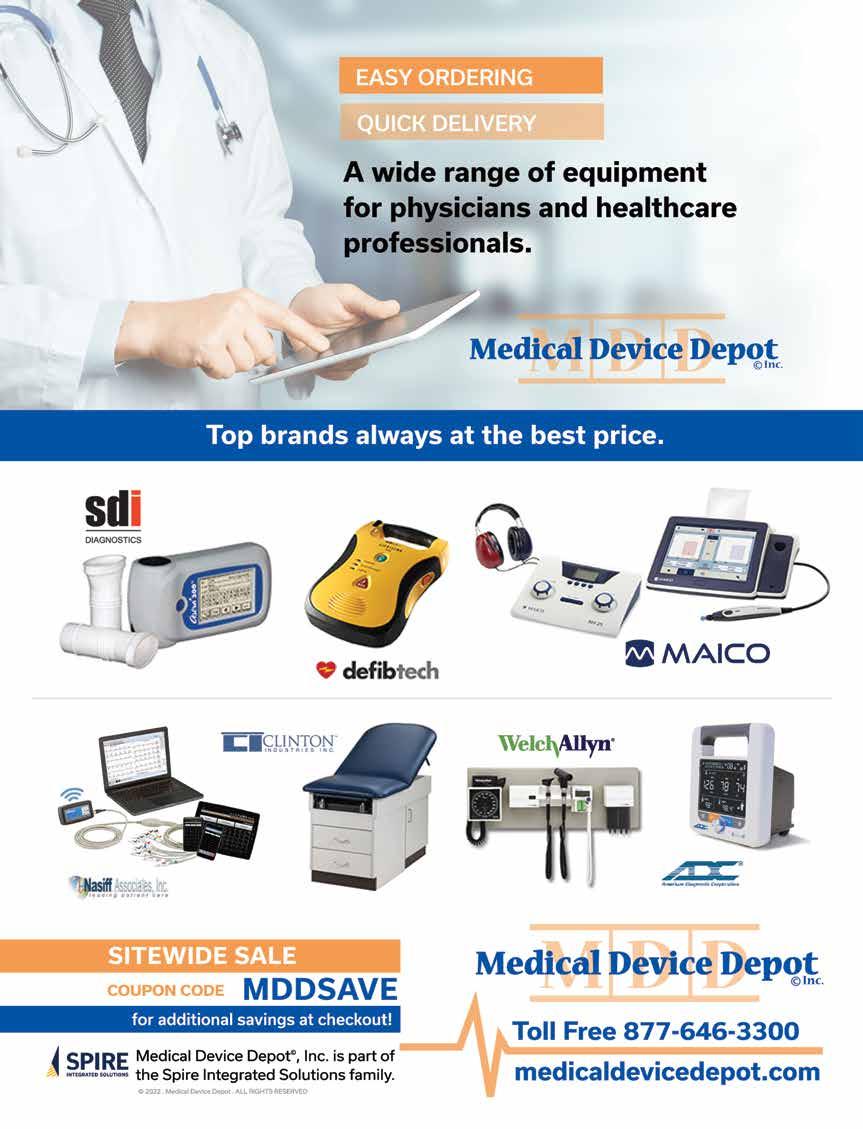
3103 3104 3105 3106 3107 3108 3109 3110
CHEMISTRY ANALYZERS
RX IMOLA
From HORIBA Medical
The RX imola is a cost-effective system that delivers consistent high-quality results. Capable of handling the workload of a medium to high throughout laboratory and a combined throughput of 560 tests per hour, the RX imola provides rapid, comprehensive testing on a small footprint analyzer when it matters most, with direct HbA1c testing capabilities.
View Brochures, Videos & More at POR.io Enter Number 3111 in the Search Area
TOXICOLOGY SCREENING SIMPLIFIED ABBOTT’S IMMTOX 270 BENCHTOP ANALYZER NOW WITH 14 ASSAYS CLIA CATEGORIZED AS MODERATE COMPLEXITY
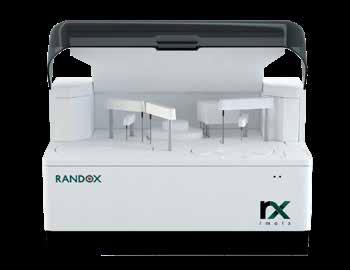
From Abbott
The ImmTox270 benchtop analyzer offers comprehensive toxicology screening solutions for physician offices, treatment centers and independent laboratories.

Broad test menu with over 20 assays to choose from including 14 that are now available as moderately complex.

With complete laboratory solutions from consultation to licensure, and compliance the Abbott Clinical Laboratory Solutions team has you covered.
View Brochures, Videos & More at POR.io Enter Number 3112 in the Search Area
COVID-19 TESTING
3113
WHY COMPROMISE? FAST
AND RELIABLE RESULTS ARE NOW DELIVERED AT THE POINT OF CARE.
From LumiraDx
Introducing the next generation in point-of-care diagnostics. With a growing menu of tests, LumiraDx uses a simple process that allows for more time with your patients by using microfluidic technology that delivers results in minutes. Learn more about rapid COVID-19 diagnostic solutions for your physician office at LumiraDx.com.
View Brochures, Videos & More at POR.io Enter Number 3113 in the Search Area
16 | PHYSICIANS OFFICE RESOURCE PRODUCT FOCUS
3111
3112
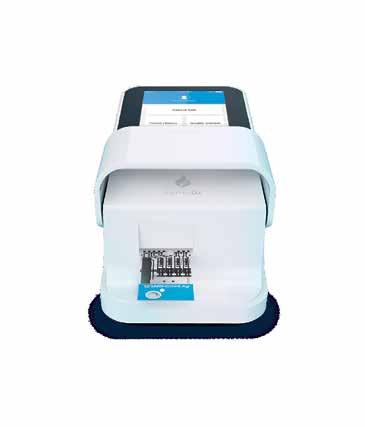

3114
3115
SOFIA® 2 FLUORESCENT IMMUNOASSAY ANALYZER AND RAPID DIAGNOSTIC TEST KITS
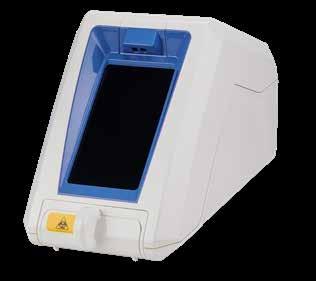

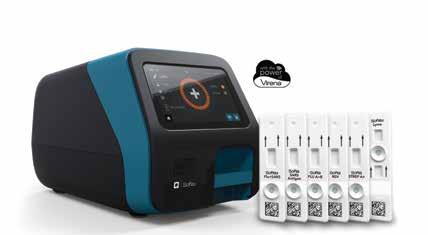
From Quidel
Sofia® 2 Fluorescent Immunoassay Analyzer and Rapid Diagnostic Test Kits Sofia 2 takes rapid testing to a new level. Proven lateral-flow technology and advanced fluorescent chemistry are all integrated into this small benchtop analyzer which can be used in any point-of-care setting. Sofia 2 kits are easy to use and adaptable to any healthcare setting. Excellent performance, objectivity, quality control, LIS capabilities, and an expanding test menu make Sofia 2 the perfect solution for the physician’s office laboratory.
View Brochures, Videos & More at POR.io
Enter Number 3115 in the Search Area
FLU AND RESPIRATORY
BIOFIRE SPOTFIRE
From bioMerieux
bioMérieux knows that an evolving world deserves evolved diagnostics. Our latest innovation, the BIOFIRE® SPOTFIRE® Respiratory Solution, is the first FDA-cleared and CLIA-waived COVID-19 testing solution. The BIOFIRE® SPOTFIRE® System is an easy-to-use system that runs the BIOFIRE® SPOTFIRE® Respiratory (R) Panel. Benefits of the SPOTFIRE Respiratory Solution include: 15 respiratory targets on 1 PCR test with results in about 15 minutes; minimal benchtop space with vertical scalability up to four modules; easy to use with an intuitive user interface.
View Brochures, Videos & More at POR.io
Enter Number 3116 in the Search Area
3116
3117
ACUCY INFLUENZA A&B TEST From Sekisui Diagnostics
The Acucy™ Influenza A&B Test is for the rapid, qualitative detection of influenza A and B viral nucleoprotein antigens from both nasal and nasopharyngeal swabs. Utilizing the Acucy™ Reader in either the point-of-care or laboratory setting, workflow flexibility is achieved with both Read Now and Walk Away features. The combination provides clinicians with standardized and definitive result interpretation.
View Brochures, Videos & More at POR.io
Enter Number 3117 in the Search Area
18 | PHYSICIANS OFFICE RESOURCE
PRODUCT FOCUS
COVID-19 TESTING
Brief Summary of Prescribing Information for STELARA® (ustekinumab)
STELARA® Injection, for subcutaneous use
See package insert for Full Prescribing Information
INDICATIONS AND USAGE: Psoriasis (Ps): STELARA® is indicated for the treatment of patients 6 years or older with moderate to severe plaque psoriasis who are candidates for phototherapy or systemic therapy. Psoriatic Arthritis (PsA): STELARA® is indicated for the treatment of patients 6 years or older with active psoriatic arthritis. Crohn’s Disease (CD): STELARA® is indicated for the treatment of adult patients with moderately to severely active Crohn’s disease. Ulcerative Colitis: STELARA® is indicated for the treatment of adult patients with moderately to severely active ulcerative colitis. CONTRAINDICATIONS: STELARA® is contraindicated in patients with clinically significant hypersensitivity to ustekinumab or to any of the excipients [see Warnings and Precautions].
WARNINGS AND PRECAUTIONS: Infections: STELARA® may increase the risk of infections and reactivation of latent infections. Serious bacterial, mycobacterial, fungal, and viral infections were observed in patients receiving STELARA® [see Adverse Reactions]. Serious infections requiring hospitalization, or otherwise clinically significant infections, reported in clinical studies included the following: • Psoriasis: diverticulitis, cellulitis, pneumonia, appendicitis, cholecystitis, sepsis, osteomyelitis, viral infections, gastroenteritis and urinary tract infections. • Psoriatic arthritis: cholecystitis. • Crohn’s disease: anal abscess, gastroenteritis, ophthalmic herpes zoster, pneumonia, and listeria meningitis. • Ulcerative colitis: gastroenteritis, ophthalmic herpes zoster, pneumonia, and listeriosis. Treatment with STELARA® should not be initiated in patients with any clinically important active infection until the infection resolves or is adequately treated. Consider the risks and benefits of treatment prior to initiating use of STELARA® in patients with a chronic infection or a history of recurrent infection. Instruct patients to seek medical advice if signs or symptoms suggestive of an infection occur while on treatment with STELARA® and consider discontinuing STELARA® for serious or clinically significant infections until the infection resolves or is adequately treated. Theoretical Risk for Vulnerability to Particular Infections: Individuals genetically deficient in IL-12/IL-23 are particularly vulnerable to disseminated infections from mycobacteria (including nontuberculous, environmental mycobacteria), salmonella (including nontyphi strains), and Bacillus Calmette-Guerin (BCG) vaccinations. Serious infections and fatal outcomes have been reported in such patients. It is not known whether patients with pharmacologic blockade of IL-12/IL-23 from treatment with STELARA® may be susceptible to these types of infections. Appropriate diagnostic testing should be considered, e.g., tissue culture, stool culture, as dictated by clinical circumstances. Pre-treatment Evaluation for Tuberculosis: Evaluate patients for tuberculosis infection prior to initiating treatment with STELARA®. Do not administer STELARA® to patients with active tuberculosis infection. Initiate treatment of latent tuberculosis prior to administering STELARA®. Consider anti-tuberculosis therapy prior to initiation of STELARA® in patients with a past history of latent or active tuberculosis in whom an adequate course of treatment cannot be confirmed. Closely monitor patients receiving STELARA® for signs and symptoms of active tuberculosis during and after treatment. Malignancies: STELARA® is an immunosuppressant and may increase the risk of malignancy. Malignancies were reported among subjects who received STELARA® in clinical studies [see Adverse Reactions]. In rodent models, inhibition of IL-12/IL-23p40 increased the risk of malignancy [see Nonclinical Toxicology (13) in Full Prescribing Information]. The safety of STELARA® has not been evaluated in patients who have a history of malignancy or who have a known malignancy. There have been post-marketing reports of the rapid appearance of multiple cutaneous squamous cell carcinomas in patients receiving STELARA® who had pre-existing risk factors for developing non-melanoma skin cancer. All patients receiving STELARA® should be monitored for the appearance of non-melanoma skin cancer. Patients greater than 60 years of age, those with a medical history of prolonged immunosuppressant therapy and those with a history of PUVA treatment should be followed closely [see Adverse Reactions]. Hypersensitivity Reactions: Hypersensitivity reactions, including anaphylaxis and angioedema, have been reported with STELARA® [see Adverse Reactions]. If an anaphylactic or other clinically significant hypersensitivity reaction occurs, institute appropriate therapy and discontinue STELARA® Posterior Reversible Encephalopathy Syndrome (PRES): Two cases of posterior reversible encephalopathy syndrome (PRES), also known as Reversible Posterior Leukoencephalopathy Syndrome (RPLS), were reported in clinical trials. Cases have also been reported in postmarketing experience in patients with psoriasis, psoriatic arthritis and Crohn’s disease. Clinical presentation included headaches, seizures, confusion, visual disturbances, and imaging changes consistent with PRES a few days to several months after ustekinumab initiation. A few cases reported latency of a year or longer. Patients recovered with supportive care following withdrawal of ustekinumab. Monitor all patients treated with STELARA® for signs and symptoms of PRES. If PRES is suspected, promptly administer appropriate treatment and discontinue STELARA® Immunizations: Prior to initiating therapy with STELARA®, patients should receive all age-appropriate immunizations as recommended
by current immunization guidelines. Patients being treated with STELARA® should not receive live vaccines. BCG vaccines should not be given during treatment with STELARA® or for one year prior to initiating treatment or one year following discontinuation of treatment. Caution is advised when administering live vaccines to household contacts of patients receiving STELARA® because of the potential risk for shedding from the household contact and transmission to patient. Non-live vaccinations received during a course of STELARA® may not elicit an immune response sufficient to prevent disease. Concomitant Therapies: In clinical studies of psoriasis the safety of STELARA® in combination with other biologic immunosuppressive agents or phototherapy was not evaluated. Ultraviolet-induced skin cancers developed earlier and more frequently in mice genetically manipulated to be deficient in both IL-12 and IL-23 or IL-12 alone [see Concomitant Therapies, Nonclinical Toxicology (13.1) in Full Prescribing Information]. Noninfectious Pneumonia: Cases of interstitial pneumonia, eosinophilic pneumonia and cryptogenic organizing pneumonia have been reported during post-approval use of STELARA®. Clinical presentations included cough, dyspnea, and interstitial infiltrates following one to three doses. Serious outcomes have included respiratory failure and prolonged hospitalization. Patients improved with discontinuation of therapy and in certain cases administration of corticosteroids. If diagnosis is confirmed, discontinue STELARA® and institute appropriate treatment [see Postmarketing Experience]. ADVERSE REACTIONS: The following serious adverse reactions are discussed elsewhere in the label: • Infections [see Warnings and Precautions] • Malignancies [see Warnings and Precautions] • Hypersensitivity Reactions [see Warnings and Precautions] • Posterior Reversible Encephalopathy Syndrome (PRES) [see Warnings and Precautions] Clinical Trials Experience: Because clinical trials are conducted under widely varying conditions, adverse reaction rates observed in the clinical trials of a drug cannot be directly compared to rates in the clinical trials of another drug and may not reflect the rates observed in practice. Adult Subjects with Plaque Psoriasis: The safety data reflect exposure to STELARA® in 3117 adult psoriasis subjects, including 2414 exposed for at least 6 months, 1855 exposed for at least one year, 1653 exposed for at least two years, 1569 exposed for at least three years, 1482 exposed for at least four years and 838 exposed for at least five years. Table 1 summarizes the adverse reactions that occurred at a rate of at least 1% and at a higher rate in the STELARA® groups than the placebo group during the placebo-controlled period of Ps STUDY 1 and Ps STUDY 2 [see Clinical Studies (14) in Full Prescribing Information].
Adverse reactions that occurred at rates less than 1% in the controlled period of Ps STUDIES 1 and 2 through week 12 included: cellulitis, herpes zoster, diverticulitis and certain injection site reactions (pain, swelling, pruritus, induration, hemorrhage, bruising, and irritation). One case of PRES occurred during adult plaque psoriasis clinical studies [see Warnings and Precautions]. Infections: In the placebo-controlled period of clinical studies of psoriasis subjects (average follow-up of 12.6 weeks for placebo-treated subjects and 13.4 weeks for STELARA®treated subjects), 27% of STELARA®-treated subjects reported infections (1.39 per subject-year of follow-up) compared with 24% of placebotreated subjects (1.21 per subject-year of follow-up). Serious infections occurred in 0.3% of STELARA®-treated subjects (0.01 per subject-year of follow-up) and in 0.4% of placebo-treated subjects (0.02 per subjectyear of follow-up) [see Warnings and Precautions]. In the controlled and non-controlled portions of psoriasis clinical studies (median followup of 3.2 years), representing 8998 subject-years of exposure, 72.3% of STELARA®-treated subjects reported infections (0.87 per subjectyears of follow-up). Serious infections were reported in 2.8% of subjects (0.01 per subject-years of follow-up). Malignancies: In the controlled and
STELARA® Placebo 45 mg 90 mg Subjects treated 665 664 666 Nasopharyngitis 51 (8%) 56 (8%) 49 (7%) Upper respiratory tract infection 30 (5%) 36 (5%) 28 (4%) Headache 23 (3%) 33 (5%) 32 (5%) Fatigue 14 (2%) 18 (3%) 17 (3%) Diarrhea 12 (2%) 13 (2%) 13 (2%) Back pain 8 (1%) 9 (1%) 14 (2%) Dizziness 8 (1%) 8 (1%) 14 (2%) Pharyngolaryngeal pain 7 (1%) 9 (1%) 12 (2%) Pruritus 9 (1%) 10 (2%) 9 (1%) Injection site erythema 3 (<1%) 6 (1%) 13 (2%) Myalgia 4 (1%) 7 (1%) 8 (1%) Depression 3 (<1%) 8 (1%) 4 (1%)
Table 1: Adverse Reactions Reported by ≥1% of Subjects through Week 12 in Ps STUDY 1 and Ps STUDY 2
STELARA® (ustekinumab)
non-controlled portions of psoriasis clinical studies (median follow-up of 3.2 years, representing 8998 subject-years of exposure), 1.7% of STELARA®treated subjects reported malignancies excluding non-melanoma skin cancers (0.60 per hundred subject-years of follow-up). Non-melanoma skin cancer was reported in 1.5% of STELARA®-treated subjects (0.52 per hundred subject-years of follow-up) [see Warnings and Precautions]. The most frequently observed malignancies other than non-melanoma skin cancer during the clinical studies were: prostate, melanoma, colorectal and breast. Malignancies other than non-melanoma skin cancer in STELARA®-treated patients during the controlled and uncontrolled portions of studies were similar in type and number to what would be expected in the general U.S. population according to the SEER database (adjusted for age, gender and race).1 Pediatric Subjects with Plaque Psoriasis: The safety of STELARA® was assessed in two studies of pediatric subjects with moderate to severe plaque psoriasis. Ps STUDY 3 evaluated safety for up to 60 weeks in 110 adolescents (12 to 17 years old). Ps STUDY 4 evaluated safety for up to 56 weeks in 44 children (6 to 11 years old). The safety profile in pediatric subjects was similar to the safety profile from studies in adults with plaque psoriasis. Psoriatic Arthritis: The safety of STELARA® was assessed in 927 subjects in two randomized, double-blind, placebocontrolled studies in adults with active psoriatic arthritis (PsA). The overall safety profile of STELARA® in subjects with PsA was consistent with the safety profile seen in adult psoriasis clinical studies. A higher incidence of arthralgia, nausea, and dental infections was observed in STELARA®treated subjects when compared with placebo-treated subjects (3% vs. 1% for arthralgia and 3% vs. 1% for nausea; 1% vs. 0.6% for dental infections) in the placebo-controlled portions of the PsA clinical studies. Crohn’s Disease: The safety of STELARA® was assessed in 1407 subjects with moderately to severely active Crohn’s disease (Crohn’s Disease Activity Index [CDAI] greater than or equal to 220 and less than or equal to 450) in three randomized, double-blind, placebo-controlled, parallel-group, multicenter studies. These 1407 subjects included 40 subjects who received a prior investigational intravenous ustekinumab formulation but were not included in the efficacy analyses. In Studies CD-1 and CD-2 there were 470 subjects who received STELARA® 6 mg/kg as a weight-based single intravenous induction dose and 466 who received placebo [see Dosage and Administration (2.3) in Full Prescribing Information]. Subjects who were responders in either Study CD-1 or CD-2 were randomized to receive a subcutaneous maintenance regimen of either 90 mg STELARA® every 8 weeks, or placebo for 44 weeks in Study CD-3. Subjects in these 3 studies may have received other concomitant therapies including aminosalicylates, immunomodulatory agents [azathioprine (AZA), 6-mercaptopurine (6-MP), methotrexate (MTX)], oral corticosteroids (prednisone or budesonide), and/or antibiotics for their Crohn’s disease [see Clinical Studies (14.4) in Full Prescribing Information]. The overall safety profile of STELARA® was consistent with the safety profile seen in the adult psoriasis and psoriatic arthritis clinical studies. Common adverse reactions in Studies CD-1 and CD-2 and in Study CD-3 are listed in Tables 2 and 3, respectively.
Table 2: Common adverse reactions through Week 8 in Studies CD-1 and CD-2 occurring in ≥3% of STELARA®-treated subjects and higher than placebo
Infections: In patients with Crohn’s disease, serious or other clinically significant infections included anal abscess, gastroenteritis, and pneumonia. In addition, listeria meningitis and ophthalmic herpes zoster were reported in one patient each [see Warnings and Precautions].
Other less common adverse reactions reported in subjects in Studies CD-1 and CD-2 included asthenia (1% vs 0.4%), acne (1% vs 0.4%), and pruritus (2% vs 0.4%).
Table 3: Common adverse reactions through Week 44 in Study CD-3 occurring in ≥3% of STELARA®-treated subjects and higher than placebo
Malignancies: With up to one year of treatment in the Crohn’s disease clinical studies, 0.2% of STELARA®-treated subjects (0.36 events per hundred patient-years) and 0.2% of placebo-treated subjects (0.58 events per hundred patient-years) developed non-melanoma skin cancer. Malignancies other than non-melanoma skin cancers occurred in 0.2% of STELARA®-treated subjects (0.27 events per hundred patient-years) and in none of the placebo-treated subjects. Hypersensitivity Reactions Including Anaphylaxis: In CD studies, two patients reported hypersensitivity reactions following STELARA® administration. One patient experienced signs and symptoms consistent with anaphylaxis (tightness of the throat, shortness of breath, and flushing) after a single subcutaneous administration (0.1% of patients receiving subcutaneous STELARA®). In addition, one patient experienced signs and symptoms consistent with or related to a hypersensitivity reaction (chest discomfort, flushing, urticaria, and increased body temperature) after the initial intravenous STELARA® dose (0.08% of patients receiving intravenous STELARA®). These patients were treated with oral antihistamines or corticosteroids and in both cases symptoms resolved within an hour. Ulcerative Colitis: The safety of STELARA® was evaluated in two randomized, double-blind, placebocontrolled clinical studies (UC-1 [IV induction] and UC-2 [SC maintenance]) in 960 adult subjects with moderately to severely active ulcerative colitis [see Clinical Studies (14.5) in Full Prescribing Information]. The overall safety profile of STELARA® in patients with ulcerative colitis was consistent with the safety profile seen across all approved indications. Adverse reactions reported in at least 3% of STELARA®-treated subjects and at a higher rate than placebo were: • Induction (UC-1): nasopharyngitis (7% vs 4%). • Maintenance (UC-2): nasopharyngitis (24% vs 20%), headache (10% vs 4%), abdominal pain (7% vs 3%), influenza (6% vs 5%), fever (5% vs. 4%), diarrhea (4% vs 1%), sinusitis (4% vs 1%), fatigue (4% vs 2%), and nausea (3% vs 2%). Infections: In patients with ulcerative colitis, serious or other clinically significant infections included gastroenteritis and pneumonia. In addition, listeriosis and ophthalmic herpes zoster were reported in one patient each [see Warnings and Precautions]. Malignancies: With up to one year of treatment in the ulcerative colitis clinical studies, 0.4% of STELARA®treated subjects (0.48 events per hundred patient-years) and 0.0% of placebo-treated subjects (0.00 events per hundred patient-years) developed non-melanoma skin cancer. Malignancies other than non-melanoma skin cancers occurred in 0.5% of STELARA®-treated subjects (0.64 events per hundred patient-years) and 0.2% of placebo-treated subjects (0.40 events per hundred patient-years). Immunogenicity: As with all therapeutic proteins, there is potential for immunogenicity. The detection of antibody formation is highly dependent on the sensitivity and specificity of the assay. Additionally, the observed incidence of antibody (including neutralizing antibody) positivity in an assay may be influenced by several factors, including assay methodology, sample handling, timing of sample collection, concomitant medications and underlying disease. For these reasons, comparison of the incidence of antibodies to ustekinumab in the studies described below with the incidence of antibodies to other products may be misleading.Approximately 6 to 12.4% of subjects treated with STELARA® in psoriasis and psoriatic arthritis clinical studies developed antibodies to ustekinumab, which were generally low-titer. In psoriasis clinical studies, antibodies to ustekinumab were associated with reduced or undetectable serum ustekinumab concentrations and reduced efficacy. In psoriasis studies, the majority of subjects who were positive for antibodies to ustekinumab had neutralizing antibodies. In Crohn’s disease and ulcerative colitis clinical studies, 2.9% and 4.6% of subjects, respectively, developed antibodies to ustekinumab when treated with STELARA® for approximately one year. No apparent association between the development of antibodies to ustekinumab and the development of injection site reactions was seen. Postmarketing Experience: The following adverse reactions have been reported during post-approval of STELARA®. Because these reactions are reported voluntarily from a population of uncertain size, it is not always possible to reliably estimate their frequency or establish a causal relationship to STELARA® exposure. Immune system disorders: Serious hypersensitivity reactions (including anaphylaxis and angioedema), other hypersensitivity reactions (including rash and urticaria) [see Warnings and Precautions]. Infections and infestations: Lower respiratory tract infection (including opportunistic fungal infections and tuberculosis) [see Warnings and Precautions]. Neurological disorders: Posterior Reversible Encephalopathy Syndrome (PRES) [see Warnings and Precautions]. Respiratory, thoracic and mediastinal disorders: Interstitial pneumonia, eosinophilic pneumonia and cryptogenic organizing pneumonia [see
N=466 STELARA® 6 mg/kg single intravenous induction dose N=470 Vomiting 3% 4%
Placebo
Placebo N=133 STELARA® 90 mg subcutaneous maintenance dose every 8 weeks N=131 Nasopharyngitis 8% 11% Injection site erythema 0 5% Vulvovaginal candidiasis/mycotic infection 1% 5% Bronchitis 3% 5% Pruritus 2% 4% Urinary tract infection 2% 4% Sinusitis 2% 3%
STELARA® (ustekinumab)
STELARA® (ustekinumab)
Warnings and Precautions]. Skin reactions: Pustular psoriasis, erythrodermic psoriasis, hypersensitivity vasculitis. DRUG INTERACTIONS: Concomitant Therapies: In psoriasis studies the safety of STELARA® in combination with immunosuppressive agents or phototherapy has not been evaluated [see Warnings and Precautions]. In psoriatic arthritis studies, concomitant MTX use did not appear to influence the safety or efficacy of STELARA®. In Crohn’s disease and ulcerative colitis induction studies, immunomodulators (6-MP, AZA, MTX) were used concomitantly in approximately 30% of subjects and corticosteroids were used concomitantly in approximately 40% and 50% of Crohn’s disease and ulcerative colitis subjects, respectively. Use of these concomitant therapies did not appear to influence the overall safety or efficacy of STELARA® CYP450 Substrates: The formation of CYP450 enzymes can be altered by increased levels of certain cytokines (e.g., IL-1, IL-6, IL-10, TNFα, IFN) during chronic inflammation. Thus, STELARA®, an antagonist of IL-12 and IL-23, could normalize the formation of CYP450 enzymes. Upon initiation of STELARA® in patients who are receiving concomitant CYP450 substrates, particularly those with a narrow therapeutic index, monitoring for therapeutic effect (e.g., for warfarin) or drug concentration (e.g., for cyclosporine) should be considered and the individual dose of the drug adjusted as needed [see Clinical Pharmacology (12.3) in Full Prescribing Information]. Allergen Immunotherapy: STELARA® has not been evaluated in patients who have undergone allergy immunotherapy. STELARA® may decrease the protective effect of allergen immunotherapy (decrease tolerance) which may increase the risk of an allergic reaction to a dose of allergen immunotherapy. Therefore, caution should be exercised in patients receiving or who have received allergen immunotherapy, particularly for anaphylaxis. USE IN
SPECIFIC POPULATIONS: Pregnancy: Risk Summary: Limited data on the use of STELARA® in pregnant women are insufficient to inform a drug associated risk [see Data]. In animal reproductive and developmental toxicity studies, no adverse developmental effects were observed after administration of ustekinumab to pregnant monkeys at exposures greater than 100 times the human exposure at the maximum recommended human subcutaneous dose (MRHD). The background risk of major birth defects and miscarriage for the indicated population(s) are unknown. All pregnancies have a background risk of birth defect, loss, or other adverse outcomes. In the U.S. general population, the estimated background risk of major birth defects and miscarriage of clinically recognized pregnancies is 2% to 4% and 15% to 20%, respectively. Data: Human Data: Limited data on use of STELARA® in pregnant women from observational studies, published case reports, and postmarketing surveillance are insufficient to inform a drug associated risk. Animal Data: Ustekinumab was tested in two embryofetal development toxicity studies in cynomolgus monkeys. No teratogenic or other adverse developmental effects were observed in fetuses from pregnant monkeys that were administered ustekinumab subcutaneously twice weekly or intravenously weekly during the period of organogenesis. Serum concentrations of ustekinumab in pregnant monkeys were greater than 100 times the serum concentration in patients treated subcutaneously with 90 mg of ustekinumab weekly for 4 weeks. In a combined embryo-fetal development and pre- and post-natal development toxicity study, pregnant cynomolgus monkeys were administered subcutaneous doses of ustekinumab twice weekly at exposures greater than 100 times the human subcutaneous exposure from the beginning of organogenesis to Day 33 after delivery. Neonatal deaths occurred in the offspring of one monkey administered ustekinumab at 22.5 mg/kg and one monkey dosed at 45 mg/kg. No ustekinumab-related effects on functional, morphological, or immunological development were observed in the neonates from birth through six months of age. Lactation: Risk Summary: There are no data on the presence of ustekinumab in human milk, the effects on the breastfed infant, or the effects on milk production. Ustekinumab was present in the milk of lactating monkeys administered ustekinumab. Due to speciesspecific differences in lactation physiology, animal data may not reliably predict drug levels in human milk. Maternal IgG is known to be present in human milk. Published data suggest that the systemic exposure to a breastfed infant is expected to be low because ustekinumab is a large molecule and is degraded in the gastrointestinal tract. However, if ustekinumab is transferred into human milk the effects of local exposure in the gastrointestinal tract are unknown. The developmental and health benefits of breastfeeding should be considered along with the mother’s clinical need for STELARA® and any potential adverse effects on the breastfed child from STELARA® or from the underlying maternal condition.
Pediatric Use: Plaque Psoriasis: The safety and effectiveness of STELARA® have been established for the treatment of moderate to severe plaque psoriasis in pediatric patients 6 to 17 years old. Use of STELARA® in patients 12 to less than 17 years old is supported by evidence from a multicenter, randomized, 60-week trial (Ps STUDY 3) that included a 12-week, doubleblind, placebo-controlled, parallel-group portion, in 110 pediatric subjects 12 years and older [see Adverse Reactions (6.1), Clinical Studies (14.2)]. Use
of STELARA® in patients 6 to 11 years old is supported by evidence from an open-label, single-arm, efficacy, safety and pharmacokinetics study (Ps STUDY 4) in 44 subjects [see Adverse Reactions (6.1), Pharmacokinetics (12.3)]. The safety and effectiveness of STELARA® have not been established in pediatric patients less than 6 years of age with psoriasis. Psoriatic Arthritis: The safety and effectiveness of STELARA® have been established for treatment of psoriatic arthritis in pediatric patients 6 to 17 years old. Use of STELARA® in these age groups is supported by evidence from adequate and well controlled studies of STELARA® in adults with psoriasis and PsA, pharmacokinetic data from adult patients with psoriasis, adult patients with PsA and pediatric patients with psoriasis, and safety data from two clinical studies in 44 pediatric patients 6 to 11 years old with psoriasis and 110 pediatric patients 12 to 17 years old with psoriasis. The observed pre-dose (trough) concentrations are generally comparable between adult patients with psoriasis, adult patients with PsA and pediatric patients with psoriasis, and the PK exposure is expected to be comparable between adult and pediatric patients with PsA [see Adverse Reactions (6.1), Clinical Pharmacology (12.3), and Clinical Studies (14.1, 14.2, 14.3)]. The safety and effectiveness of STELARA® have not been established in pediatric patients less than 6 years old with psoriatic arthritis. Crohn’s Disease and Ulcerative Colitis: The safety and effectiveness of STELARA® have not been established in pediatric patients with Crohn’s disease or ulcerative colitis. Geriatric Use: Of the 6709 patients exposed to STELARA®, a total of 340 were 65 years or older (183 patients with psoriasis, 65 patients with psoriatic arthritis, 58 patients with Crohn’s disease and 34 patients with ulcerative colitis), and 40 patients were 75 years or older. Although no overall differences in safety or efficacy were observed between older and younger patients, the number of patients aged 65 and over is not sufficient to determine whether they respond differently from younger patients.
OVERDOSAGE: Single doses up to 6 mg/kg intravenously have been administered in clinical studies without dose-limiting toxicity. In case of overdosage, it is recommended that the patient be monitored for any signs or symptoms of adverse reactions or effects and appropriate symptomatic treatment be instituted immediately. PATIENT COUNSELING INFORMATION: Advise the patient and/or caregiver to read the FDA-approved patient labeling (Medication Guide and Instructions for Use). Infections: Inform patients that STELARA® may lower the ability of their immune system to fight infections and to contact their healthcare provider immediately if they develop any signs or symptoms of infection [see Warnings and Precautions]. Malignancies: Inform patients of the risk of developing malignancies while receiving STELARA® [see Warnings and Precautions]. Hypersensitivity Reactions: • Advise patients to seek immediate medical attention if they experience any signs or symptoms of serious hypersensitivity reactions and discontinue STELARA® [see Warnings and Precautions]. • Inform patients the needle cover on the prefilled syringe contains dry natural rubber (a derivative of latex), which may cause allergic reactions in individuals sensitive to latex [see Dosage and Administration (2.4) in Full Prescribing Information] Posterior Reversible Encephalopathy Syndrome (PRES): Inform patients to immediately contact their healthcare provider if they experience signs and symptoms of PRES (which may include headache, seizures, confusion, or visual disturbances) [see Warnings and Precautions] Immunizations: Inform patients that STELARA® can interfere with the usual response to immunizations and that they should avoid live vaccines [see Warnings and Precautions]. Administration: Instruct patients to follow sharps disposal recommendations, as described in the Instructions for Use.
REFERENCES: 1Surveillance, Epidemiology, and End Results (SEER) Program (www.seer.cancer.gov) SEER*Stat Database: Incidence - SEER
6.6.2 Regs Research Data, Nov 2009 Sub (1973-2007) - Linked To County Attributes - Total U.S., 1969-2007 Counties, National Cancer Institute, DCCPS, Surveillance Research Program, Surveillance Systems Branch, released April 2010, based on the November 2009 submission.
Prefilled Syringe Manufactured by: Janssen Biotech, Inc., Horsham, PA 19044, US License No. 1864 at Baxter Pharmaceutical Solutions, Bloomington, IN 47403 and at Cilag AG, Schaffhausen, Switzerland
Vial Manufactured by: Janssen Biotech, Inc., Horsham, PA 19044, US License No. 1864 at Cilag AG, Schaffhausen, Switzerland
© 2012, 2016, 2019 Janssen Pharmaceutical Companies cp-125602v5
STELARA® (ustekinumab)
STELARA® (ustekinumab)
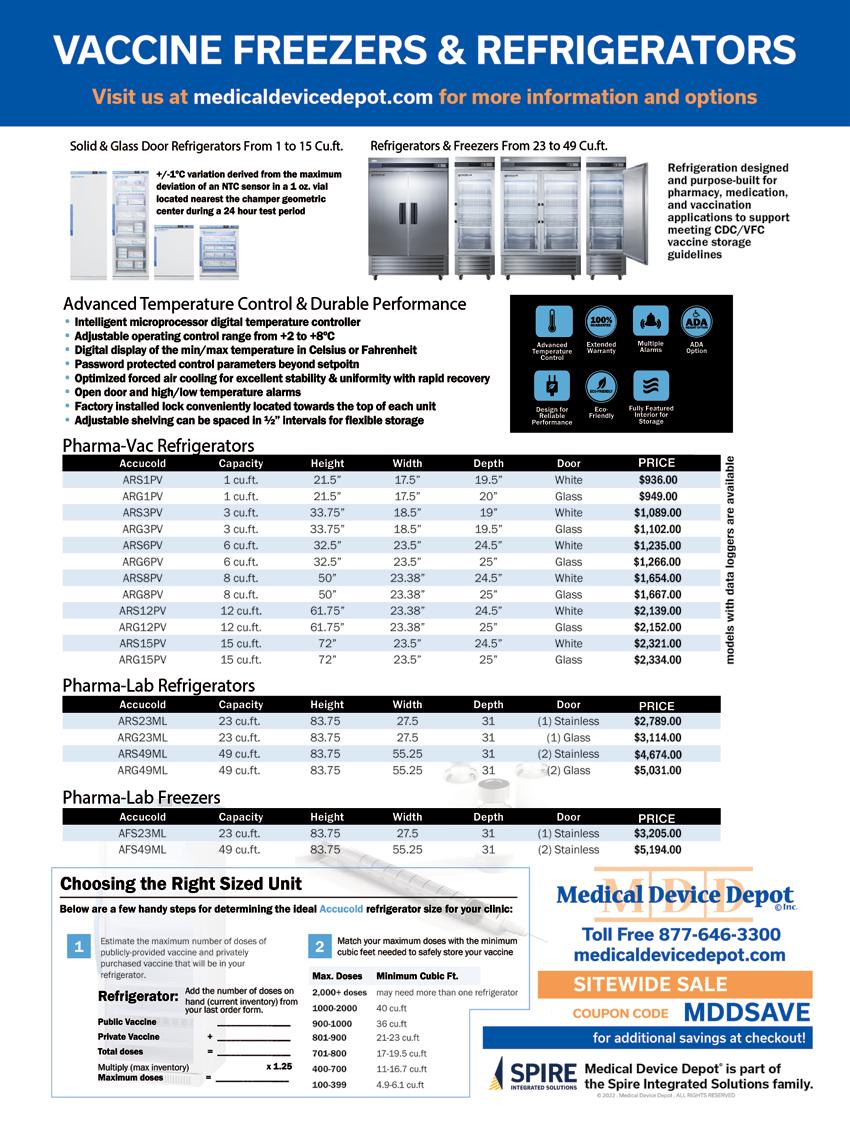

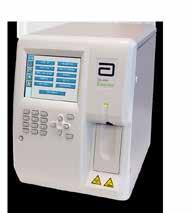
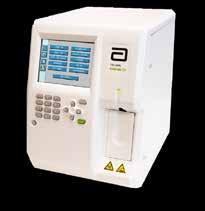
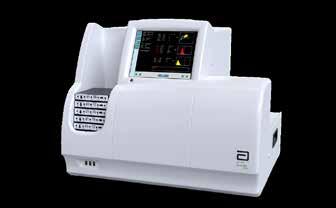

RIGHT SIZE.
PERFORMANCE.
LABORATORY. CELL-DYN EMERALD 22 CELL-DYN EMERALD CELL-DYN EMERALD 22 AL CELL-DYN RUBY LOWVOLUME LOWTOMIDVOLUME MIDVOLUME o Support diverse test volumes o Technological sophistication for routine and specialized testing o Commutable results A suite of harmonized hematology solutions to meet the needs of your laboratory © 2022 Abbott. All rights reserved. All trademarks referenced are trademarks of either the Abbott group of companies or their respective owners. Any photos displayed are for illustrative purposes only. CELL-DYN Ruby and CELL-DYN Emerald 22 AL are Class I laser products. For in vitro diagnostic use only. ADD-142016-GBL-EN 10/22 CORELABORATORY.ABBOTT/HEMATOLOGY 3131 3132 3133 3130
RIGHT
THE RIGHT FIT FOR YOUR

3134

FOUR SEASONS HOTEL KYOTO
BY BRANDI BROWER
Confession time, Japan has never been a bucket list place for me; it hasn’t been on my radar as a “have to see before I die” destination. But I decided to see what the hype was about when the country finally opened up for visitors, post-covid restrictions.
Japanese proverb: I no naka no kawazu, taikai o shirazu
*Translation: A frog in the well does not know the great ocean. In other words, we must open up our minds to new possibilities. I was a frog stuck in a well and needed to hop across the Pacific to explore Japan’s greatness.
A string of islands with approximately 1500 miles of mostly mountainous terrain is roughly the size of California. An estimation of California’s population is 37 million. In comparison, this island holds approximately 87 million more people. The country has many hot springs, forests, beaches, beautiful landscapes, and natural wonders, and as I fly over the country to Haneda Airport, I’m also struck by how many golf courses I see. They like their links here.
Upon entering the country, I board the Tokiado Shinkansen, colloquially known in English as the bullet train, for my first destination. Japan started the high-speed train revolution in 1964 and remains at the top of the game with a speed record of 374 mph on the new magnetic levitation train. While that bullet is not ready for commercial use, I boarded the slower 200 mph Shinkansen bound for Kyoto. Despite the speed, I could still view the green countryside and quaint small villages, popping in and out of tunnels cut through the surrounding mountains.
Kyoto, which translates to “Capital City,” was once the capital of Japan for over 1000 years. The country’s capital is always where the emperor lives, and from 794 to 1868, the emperor resided in this beautiful valley surrounded on three sides by undulating hills. The old capital is known for its historical and cultural richness, home to numerous temples, shrines, tea houses, gardens, and traditional machiya wooden townhouses. The city is 1/3 the size of today’s capital city of Tokyo, and even though it has all the modern-day amenities and luxury of a big city, its small-town charm shines through in its significant cultural
2023 · ISSUE 9 | 33
A THREE PART SERIES
vibe. Kyoto is one of Japan’s best-preserved historical cities, home to 17 UNESCO World Heritage Sites- intact palaces hearkening back to Imperial Japan’s golden age.
Because history and culture are the heart of this city, established in the 7th century, it is no surprise to find that the Four Seasons Hotel Kyoto rests at the foot of a mountain in the scenic Higashiyama Temple district, tucked away at the end of a private drive lined with bamboo groves, nestled next to a 12th-century Shakusuien ikeniwa (pond garden.) The striking porte-cochere welcomes guests in the spirit of hospitality with the motif of traditional Japanese paper umbrellas. The handcrafted paper umbrellas have a delicate framework; in contrast, using steel and wooden beams, the roof of this unique courtyard is made by laying one “umbrella” on top of another, with the curvature of the rafters reminiscent of umbrella ribs. Beautiful.

Stepping inside the spare no-expense lobby, the view from the 30-foot-high expansive windows overlooking the property’s focal point, an 800-year-old pond, and impeccably manicured gardens is impressive. The curated zen aesthetic is just what I was hoping for as my first introduction to this ancient culture. As a staff member kindly directs me during a welcoming property walk, I feel like I’ve gone back in time, as if a member of the Taira clan, perhaps
the famous samurai warrior, Taira no Shigemori himself, would be standing on the once-stone bridge of his family’s estate. Now, a tempered glass bridge arches over the remnants of the Heike heritage as I explore this secret garden. The narrow path creeps up and down, weaving past a stone Jizo statue, known as the guardian of children and travelers, and thought to have been there since the middle of the Edo era (1603–1868), I pass the tall century stone pagoda with nine levels, is symbolic of intellectual qualities, completeness, strength and nobility as well as an enhancer of wealth, career and luck. I feel some of that luck- to be here in this captivating world.
At the end of the stone path is the beautifully constructed teahouse, built chiefly of cypress wood from Kyoto. It is a charming structure on stilts over the Koi-filled ikeniwa (pond garden), used mainly for entertaining purposes. Four Seasons can host evenings in the Fuju lounge with champagne or the Hotel’s original sake and lovely geisha performances or, in contrast, a cozy tea ceremony in the adjacent Shakusui-tei, immersed in the elevated art form of tea drinking. Kyoto is home to green tea. The spiritual beauty and traditional craft in this intimate and serene setting, instructed at a high level in preparing and partaking matcha by a tea master, is a memorable experience all guests should reserve.
34 | PHYSICIANS OFFICE RESOURCE
Upon entering my guest room, the comfort and coziness envelop me, one of 180 rooms in the low-rise five-story structure. By cozy, I don’t mean tiny; the floor-to-ceiling windows overlooking the centerpiece pond garden and the distant view of Kyoto proper are both expansive and spectacular. My meaning of cozy is the Japanese artistic touches juxtaposed with modern modalities; I feel at ease instantly. Like the public spaces, the guest quarters are current and contemporary aesthetics blended with Japan-infused artisan creations. Examples of the craftsmanship: washi-paper lamps, fusuma screens, urushi lacquerware, and air-tight tea canisters, crafted locally for six generations of the Yagi family who have owned the company since 1875, as well as exclusively developed textiles in all rooms and throughout the Hotel, by local kimono curator Hosoo, established in 1688, all bring refinement to the space.
Behind the sumptuous bed with the lavish linens are lovely painted depictions of the four seasons; the tree branches represent Spring in my room. But each quarter is unique - a surprise awaits upon arrival to see which one of nature’s seasons will be beautifying your suite. The sensitivity to the seasons is an integral part of the Japanese belief system of Shinto, which is evident in their art and cultural celebrations.

Kyoto is one of a few areas in the country with four distinct and photogenic seasons; to look out the window and admire the vegetation, it’s evident that plants bloom all year here - bright green Summers, vibrant Autumn foliage, snow-tipped trees of Winter and the famed cherry blossoms of Spring. Inside this sleek sanctuary, marble, granite, metal, wood, and glass collide. The double vanity, in-mirror bathroom TV, Toto bidet, and bath/rain shower combination are enclosed with double glass doors to create a large steam room option. The perfect extra touch, hanging in the closet, is a yukata. The lightweight cotton version of a kimono is the perfect accessory for lounging in this comfy accommodation.
Japanese proverb: Gou ni itte wa, gou ni shitagae
*Translation: Entering the village, obey the village Or better, When in Rome, do as the Romans do. My mantra as I stepped out of my comfort zone, immersing myself in the country and culture. First, an introduction to the traditional ritual of Japan’s bathing culture. Considered both for pleasure and purification, the tradition of the soothing ofuro (hot bath) and exhilaration of mizuburo (cold bath) was a treat. Prepared to be naked, following the etiquette, I sat on the low stool and washed my hair and body using the bucket and ladle before entering the large, stoned, and marble communal tub. In the U.S., bathing is synonymous with washing the body, but it’s considered cleaning the spirit in Japan. The heat of the ofuro bath was calming and relaxing. After ten minutes, it was time to enter the cold bath. Both stimulating and invigorating once I girded myself with the challenge of transferring into the icy water. Ten minutes was too long to endure, so I eased myself back into the warm water again- #repeat. The process’s health benefits are removing excess lactic acid, decreasing muscle soreness and swelling, and reducing fatigue.
I enjoyed another form of bathing: forest bathing. Hot springs’

popularity throughout Japan for hundreds of years created the onsen baths, then later came the ofuro baths; however, with forest bathing, there is no water. Shinrin-yoku, or taking in the forest atmosphere, is a modern-day physiological and psychological exercise invented in the 1980s by a Japanese man, Dr. Qing Li. The idea of bathing in nature, escaping the congestion of the city, and inhaling the fresh air of the forest is the exact “park prescription” the doctor ordered. It’s more than taking a hike; it’s using your senses to take in all the beauty surrounding you, aligning body and mind. Health benefits include reducing stress hormones, activating the parasympathetic nerves, and improving immunity. My guide, Alex, taught me “komorebi” which is a feeling -walking through the forest in the morning when the day wakes up and the sun shines through the trees, rays of light kissing the ground. We climbed higher and higher to the top of Mt. Amidagamine. We discovered the mausoleum of Toyotomi Hideyoshi, once the son of a peasant, rising as a Samurai, Daimyo warlord, and famous unifier of Japan. As I slowly walk down the 500+ steps of the historical site, I breathe in the surroundings and serenity at the close of this forest bathing experience.
Steeped in history with its 600 shrines and 1600 temples, Kyoto’s must-see list: Yasaka Shrine, one of the most famous in the city, the first imperial palace grounds and gardens, Fushimi Inari, one of the most visited spots in all of Japan with its
2023 · ISSUE 9 | 35
10,000 torii gates, and the beloved Kiyomizudera Temple, wholly made out of wood, not a single piece of metal or nail supports the structure, named after a sacred water fountain that grants anyone who drinks from it the gift of health and longevity— which I sipped from, a bonus gift from my visit. Other notable stops when visiting this cultural mecca: Philosopher’s Path, Ginkaku-ji Temple, Kyoto National Museum, Sanjusangendo Temple, and the nearby traditional entertainment district of Gion, painted-faced Geiko (or Geisha) can still be seen making their way along the cobbled streets. No worries if you miss that stop; the Four Seasons hosts a Maiko (Geiko in training) two afternoons a week, where she performs two dances for a hushed audience of Hotel guests as they gaze upon her talents in the grand lobby. She graciously allows photos with her afterward.
Sightseeing + lots of stairs = spa day. That’s an equation that makes perfect sense. The two levels of posh pampering, located in the sub-terrain levels of the property, are plush. The lowest level: exercise gym, studio, locker room with shower/bath as well as an impressive 65-foot pool & two whirlpools, lounge chaises beneath the water as well as lounge chairs on the deck partitioned for privacy, small squares cut into the surrounding granite walls have glowing faux candles to complete this restorative rendezvous. After taking advantage of the facilities, I venture to the spa level for my scheduled treatment.
The remarkable design and craftsmanship of the property are evident throughout the spa. The hand-adzed flooring with the artisan undulation of the dark hardwood gives a unique feeling as you walk. Using mixed textures; wood or stone treatments on every wall, bamboo benches, chiseled stone stand-alone sinks, fusuma screens, and accent walls with frosted glass combine aesthetically to create a perfect retreat, designed to maximize “Kutsurogi”- the Japanese art of relaxation. I’m greeted with tea while waiting for my therapist. My treatment: Enso Journey 240 minutes is a transition from motion to stillness with this exquisite signature experience. The first part begins with a stroll and meditation in the Shakusui-en pond garden, a serene sojourn that encourages self-reflection and digital detoxification. My guide, Miyuki, lights incense for me, with legs crossed, as I sit in the small covered structure open to the sights and sounds of the pond garden. Light rain gently falls as I soak in the moment’s stillness.
The therapeutic journey continues with the introduction to my massage therapist, Yuko. As we walk down the hall, lantern-like light fixtures pave the way past treatment rooms; in front of some doors, a stone tied with rope lays in front, “sekimori-ishi “(barrier-keeper stone) that signals the space is occupied. We enter the “Sky” room, where I enjoy a foot bath of green tea and salt scrub with bamboo and charcoal essence. The body treatment uses Enso-inspired circular strokes to restore balance and create a state of profound calm. The oil used is the Four Seasons blend, original to Kyoto; I loved the Spring oil: sweet orange, lem-
on, Japanese Kuromoji, and sugi leaves, used for refreshing and uplifting. Next, the Japanese sake bath, great for detox, circulation, and anti-aging; sinking into the blissful bath in the private spa suite was a lovely follow-up to the calm massage. Following that, a heavenly green tea facial treatment that leaves skin purified, moisturized, and deeply revitalized. Lastly, I’m guided to the tranquil relaxation room, where a small platform bed with a pillow is waiting, framed on three sides with a drawn curtain for privacy. Tea is served, placed earnestly on the single step outside the cozy cocoon for me to sip and savor, a perfect place to revel in the remaining residuals of this very relaxing ritual.
Dining at the Four Seasons Kyoto is a pleasure, and you need not leave the premises for exceptional international and Japanese dining options. Sushi Wakon, a 10-seat restaurant, is top of the list for upscale cuisine. The magic begins at an 8-metre-long Japanese cypress wood sushi counter crafted by a celebrated artisan over 200 years ago. Flown daily from Tokyo’s famous Toyosu market, high-quality ingredients are carefully prepared authentic edomae-style into delectable creations while you watch and admire the talented chefs.
The Brasserie, headed by Chef Ryuji Koga, marries French cuisine techniques with Japanese ingredients, creating his unique culinary stamp. Dine by firelight in front of the stone fireplace, outside on the expansive terrace overlooking the pond garden, or in carved wooden alcoves for a more private experience. With seasonal-set menus, al-acarte favorites, or just a shared dessert, an evening at The Brasserie is time well spent. The breakfast buffet is another delectable decision, where you can dabble in the traditional fare of made-to-order eggs, charcuterie, salads, fruit, and fresh-baked pastries or dive into the extensive Asian buffet for a conventional Kyoto breakfast. Or try a little of bothyou won’t be disappointed.
Four Seasons Kyoto is a special place within a special country. According to their readers’ 2023 Travel and Leisure magazine poll, Kyoto ranked number two as the favorite city to visit in Asia, citing the cultural richness, the friendliness of the people, and its innate beauty. Those sentiments are echoed within the walls of the Four Seasons property, traditional aesthetics with modern luxury, and a team of happy and helpful staff, all surrounding a lovely 800-yearold pond garden.
Author Matthew Tobin Anderson has shared, “There’s an ancient saying in Japan that life is like walking from one side of infinite darkness to another, on a bridge of dreams. They say that we’re all crossing the bridge of dreams together. That there’s nothing more than that. Just us, on the bridge of dreams.” Before catching my Shinkansen train out of Kyoto, I revisit the pond garden one last time, the heart of the Hotel, walking reverently on the tempered glass bridge arched over the rippling water; it feels a bit like a dream~ a bridge of dreams, in this enchanting old capital city.
36 | PHYSICIANS OFFICE RESOURCE

— PHYSICIANSOFFICERESOURCE.COM/MDESCAPES/ INSTAGRAM @MDESCAPES LUXURY TRAVEL DESTINATIONS | SPECIAL OFFERS | REVIEWS




38 | PHYSICIANS OFFICE RESOURCE

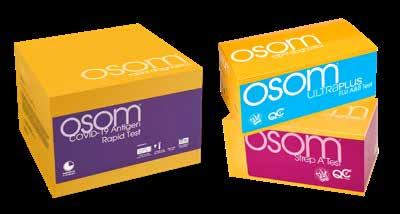









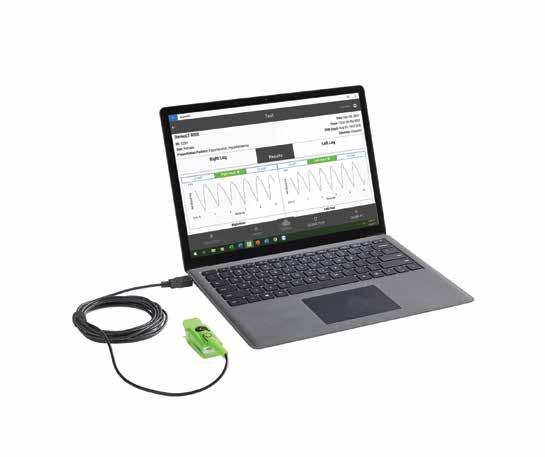





 BY JAY LONG, MD
BY JAY LONG, MD


